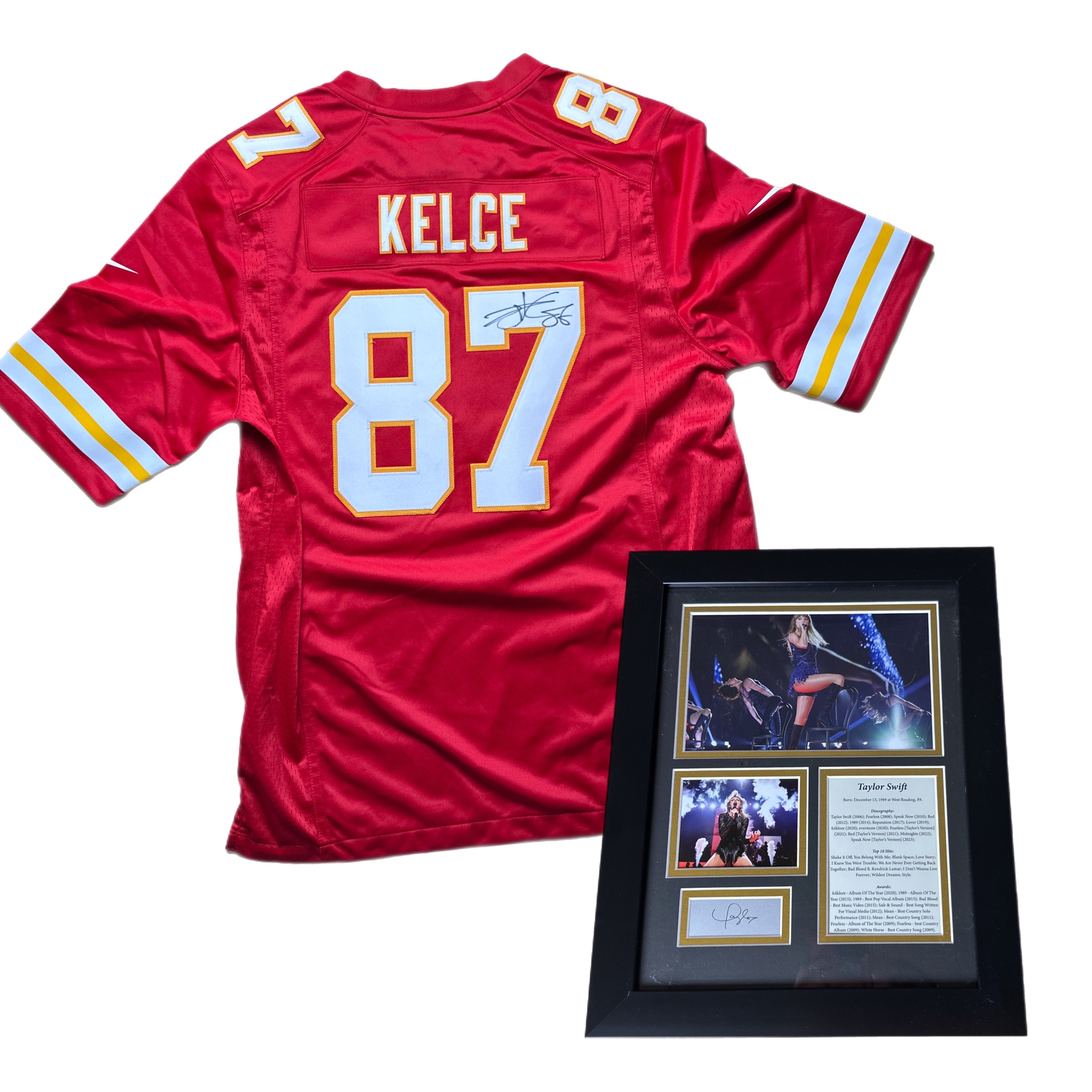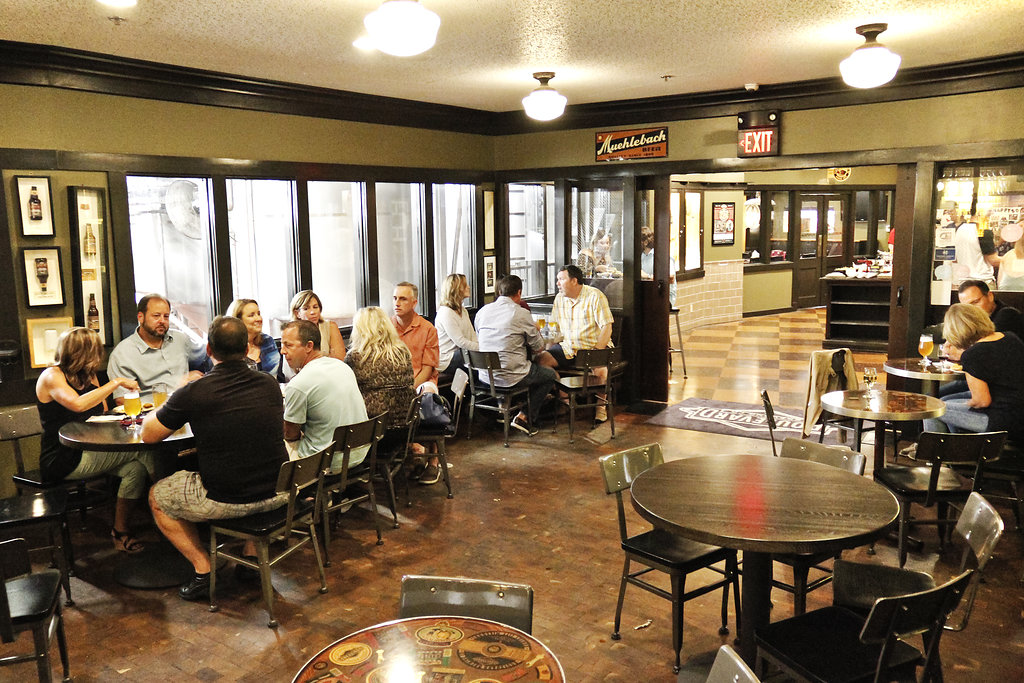Kansas City Jazz
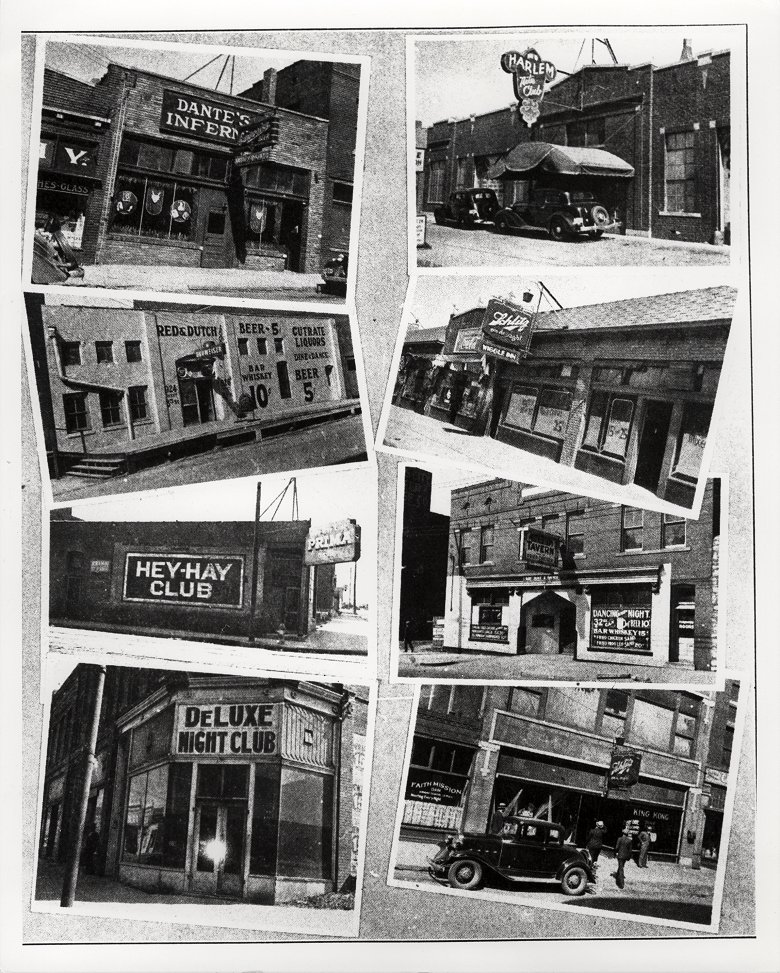
Kansas City jazz is a style of jazz that developed in Kansas City, Missouri, during the 1920s and 1930s. Its hard-swinging rhythms, bluesy melodies, and extended improvisations characterize it. Kansas City jazz is also known for its emphasis on the blues and its use of blues riffs.
The Kansas City jazz sound developed in the city’s many nightclubs and speakeasies. These clubs were a popular destination for locals and tourists, providing a platform for musicians to experiment and develop their sound.
Some of the most notable Kansas City jazz musicians include Count Basie, Lester Young, Ben Webster, and Charlie Parker. These musicians were known for their virtuosic playing and their innovative improvisations.
The Kansas City jazz sound had a major impact on the development of swing and bebop. It was one of the most important styles of jazz to emerge in the early 20th century, and it continues to be influential today.
Street Hotel’s Blue Room
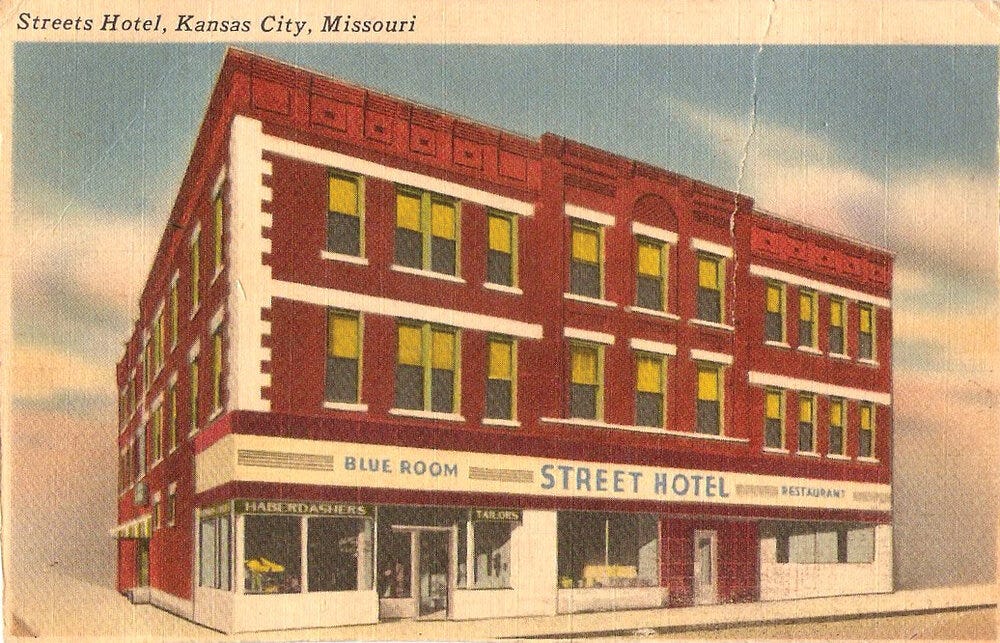
The Street Hotel’s Blue Room was a jazz club in Kansas City that operated from 1928 to 1954. It was at 18th and The Paseo in the heart of Kansas City’s jazz district. The club was owned and operated by Reuben and Ella Street, a successful African-American couple also major landowners in the area.
The Street’s Blue Room was one of the most popular jazz clubs in Kansas City during its operation. It was known for its intimate atmosphere, high-quality sound system, and diverse lineup of performers. The club was a popular spot for locals and tourists alike, and it was one of the few places where African Americans could come to dance and listen to jazz music.
Some notable jazz musicians who performed at the Street’s Blue Room included Count Basie, Lester Young, Ben Webster, and Charlie Parker. The club was also a popular spot for jam sessions, and it was one of the places where the new style of jazz known as bebop was developed.
The Street’s Blue Room was also a notable example of the city’s “wide open” era, during which organized crime flourished, and speakeasies and nightclubs were plentiful. The club’s intimate atmosphere and diverse lineup of performers reflected the city’s vibrant culture during this period.
It closed its doors in 1954 due to financial difficulties but was reopened in 1997 as a jazz club and museum inside the American Jazz Museum. The club features a replica of the original stage and a rotating lineup of jazz musicians from around the world. The museum also tells the story of Kansas City jazz and its impact on the world.
The Street’s Blue Room is a living tribute to the rich history of Kansas City jazz. It is a place where people can learn about the music, enjoy live performances, and celebrate the legacy of the jazz greats who once played there.
Sunset Jazz Club
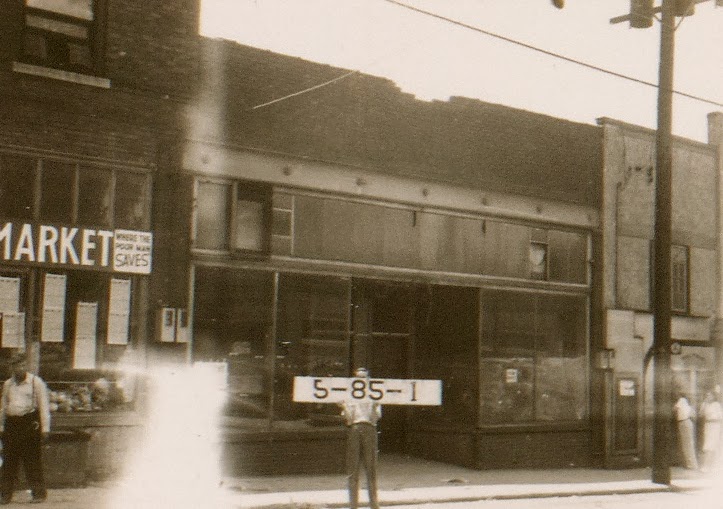
The Sunset Jazz Club was a jazz club in Kansas City that operated from 1933 to 1938. It was located at 12th and Highland Avenues in the heart of KC’’s jazz district. The club was owned and operated by Joe Lusco, an associate of organized crime boss Tom Pendergast.
During its operation, the Sunset Jazz Club was one of the most popular jazz clubs in Kansas City. It was known for its intimate atmosphere, high-quality sound system, and diverse lineup of performers. The club was a popular spot for locals and tourists alike, and it was one of the few places where African Americans could come to dance and listen to jazz music.
Some notable jazz musicians who performed at the Sunset Jazz Club included Count Basie, Lester Young, Ben Webster, and Charlie Parker. The club was also a popular spot for jam sessions, and it was one of the places where the new style of jazz known as bebop was developed.
The Sunset Jazz Club closed its doors in 1938; today, the site is home to a parking lot. However, the club’s legacy continues to live on. It is remembered as one of the most important venues in the history of Kansas City jazz, and it is a symbol of the city’s unique culture during the “wide open” era.
In 1999, the Kansas City Jazz Orchestra released a CD titled “Sunset” in honor of the legendary jazz club. The CD features performances of classic Kansas City jazz tunes by the orchestra and special guests such as Wynton Marsalis and Joshua Redman.
William James Basie
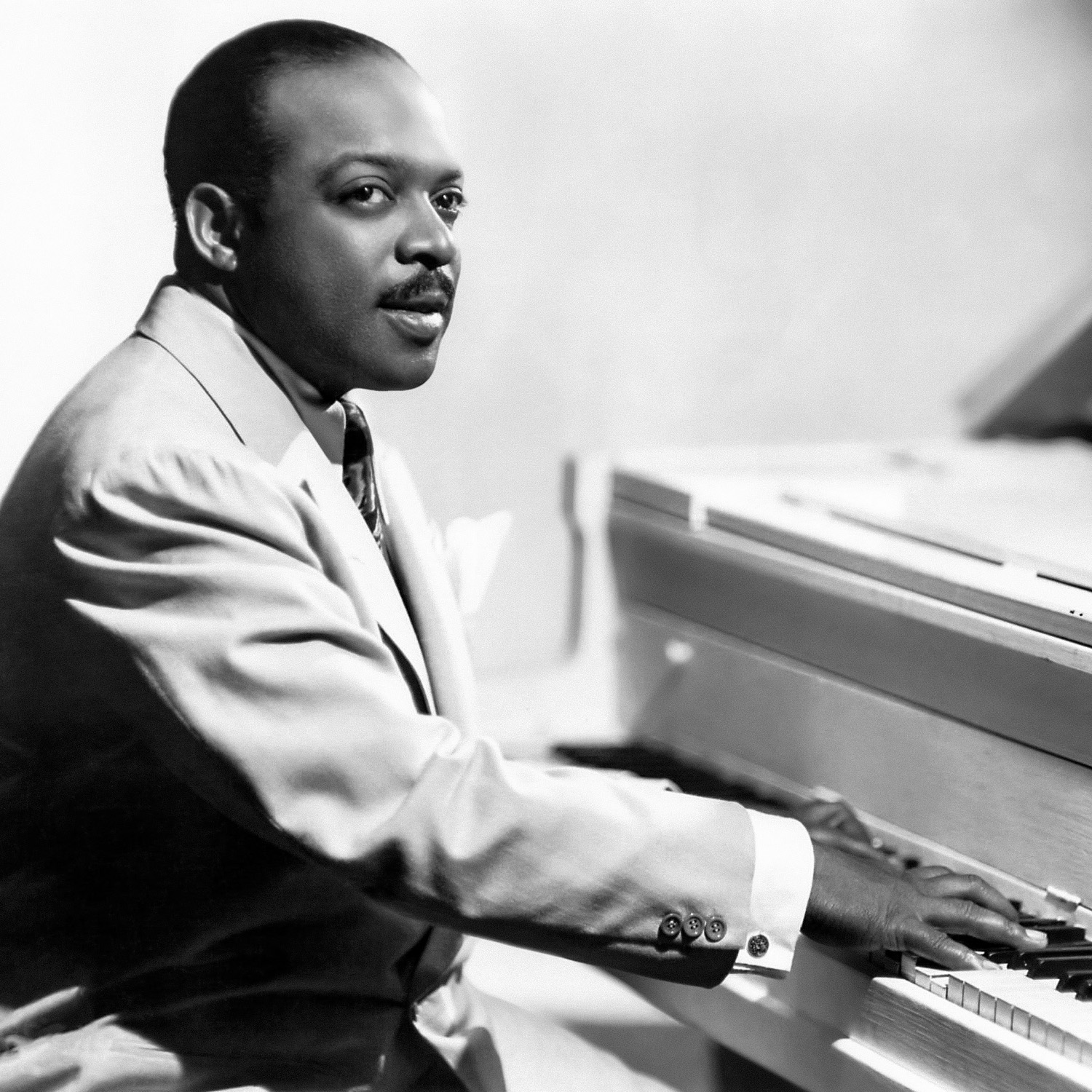
William James Basie, nicknamed “Count”, was an American jazz pianist, organist, bandleader, and composer. He was one of the most influential jazz musicians of all time, and his big band was one of the most popular and successful during the swing era.
Basie was born in Red Bank, New Jersey, and began playing the piano at a young age. He moved to New York City in the early 1920s, where he worked as a pianist and accompanist for various vaudeville performers. In 1929, he joined the Bennie Moten band in Kansas City. After Moten’s death in 1935, Basie formed his own band, quickly becoming one of the country’s most popular.
Basie’s band was known for its infectious swing rhythms and its impressive roster of musicians, including Lester Young, Herschel Evans, Buck Clayton, and Jimmy Rushing. The band recorded numerous hit songs during the swing era, including “One O’Clock Jump”, “Jumpin’ at the Woodside”, and “Every Tub”.
Basie remained active until his death in 1984. He recorded over 480 albums and won nine Grammy Awards. He was also awarded the Presidential Medal of Freedom in 1980.
Benjamin “Bennie” Moten
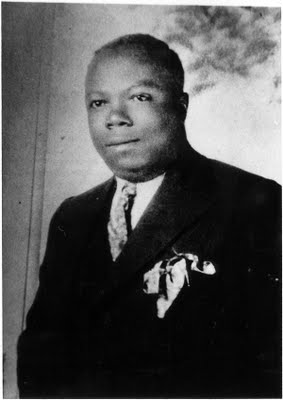
Benjamin “Bennie” Moten was an American jazz pianist and bandleader born and raised in Kansas City, Missouri. He led his Kansas City Orchestra, the most important regional, blues-based orchestra active in the Midwest in the 1920s, and helped develop the riffing style that would define many of the 1930s big bands. The jazz standard “Moten Swing” bears his name.
Moten began playing music from an early age and developed as a pianist, pulling together other musicians in a band. His first recordings were made (for OKeh Records) on September 23, 1923, and were rather typical interpretations of the New Orleans style of King Oliver and others. They also showed the influence of the ragtime still popular in the area, and the stomping beat for which his band was famous. These OKeh sides (recorded 1923–1925) are some of the era’s more valuable acoustic jazz 78s; they are treasured records in many serious jazz collections.
Moten’s band continued to evolve throughout the 1920s, and by the early 1930s, it was one of the country’s most popular and influential big bands. The band included many of the greatest jazz musicians of the era, including Count Basie, Lester Young, and Buck Clayton. Moten’s band was known for its infectious swing rhythms and innovative arrangements.
In 1935, Moten died suddenly of a cerebral hemorrhage at the age of 41. Count Basie took over his band and continued to lead it to even greater success. Moten’s legacy is that of a pioneering bandleader and pianist who helped shape jazz’s sound in the 1920s and 1930s.
Moten was a highly respected figure in the jazz world, and his music continues to be enjoyed by people all over the world. He is considered one of the most important figures in developing big-band jazz.
Claude Williams
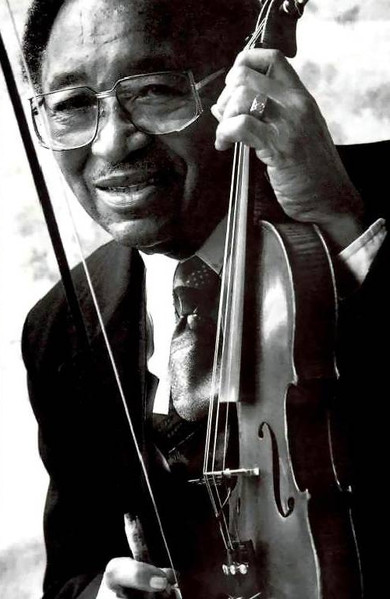
Claude Williams, also known as “Fiddler Williams,” was one of the most important and influential figures in the history of Kansas City jazz. He was born and raised in Muskogee, Oklahoma, and began playing music at a young age. He was proficient in various instruments, including the violin, guitar, banjo, and mandolin, but he was best known for his violin playing.
Williams moved to Kansas City in 1927 and quickly established himself as a leading musician in the city’s vibrant jazz scene. He played with a number of prominent bands, including the Twelve Clouds of Joy, the Cole Brothers, and Count Basie’s Orchestra. He was also a popular soloist and performed at many of the city’s most prestigious venues.
Williams’ playing style was characterized by its virtuosity, expressiveness, and deep roots in the blues. He was a master of improvisation and could create complex and exciting melodies on the spot. He was also a skilled composer, and he wrote a number of tunes that became jazz standards, including “Stompin’ at the Savoy” and “Blues for Jimmy.”
Williams influenced a generation of jazz musicians, including Charlie Parker, Lester Young, and Dizzy Gillespie. He also mentored many young musicians and helped shape the sound of Kansas City jazz.
In addition to his musical contributions, Williams was also a strong advocate for civil rights. He was one of the first black musicians to perform on national television and spoke out against racism and discrimination throughout his career.
Williams died in Kansas City in 2004 at the age of 96. He is considered one of the most important figures in the history of Kansas City jazz, and his legacy continues to inspire and influence musicians worldwide.
Williams’ legacy is celebrated yearly at the Claude Williams Kansas City Jazz Festival, featuring performances by some of the world’s leading jazz musicians.
Lester Young
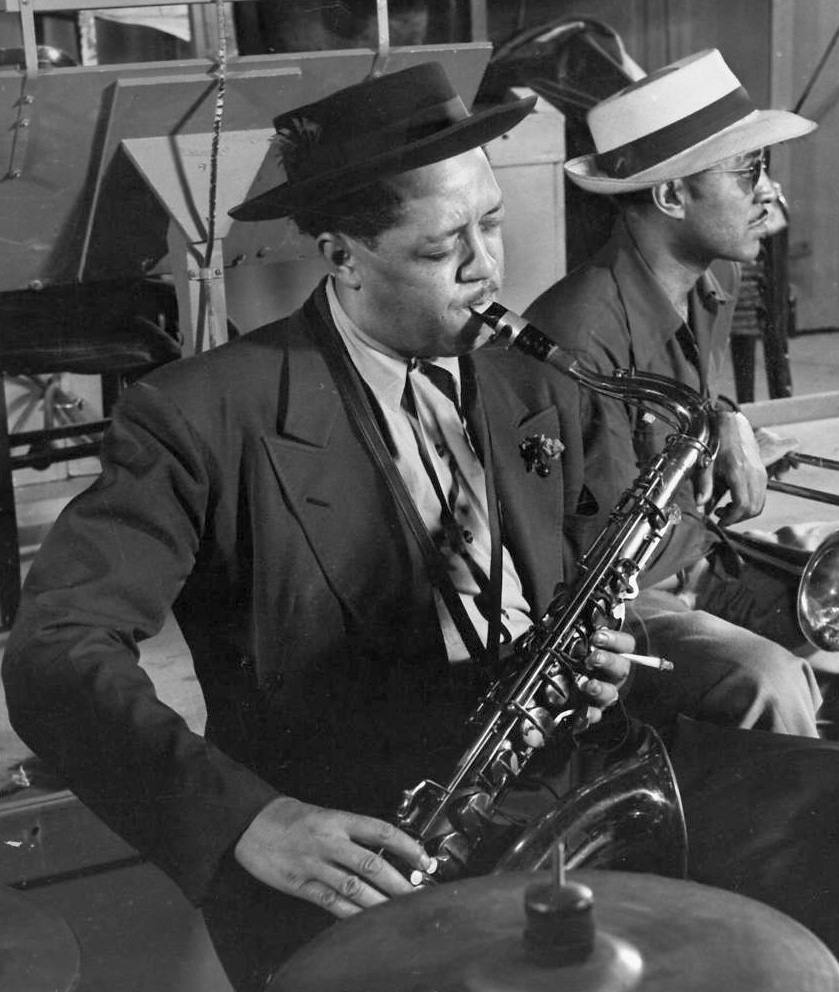
Lester Young, also known as “Pres” or “Prez,” was one of the most important and influential figures in the history of Kansas City jazz. He was born and raised in Woodville, Mississippi, and began playing saxophone at a young age. He moved to Kansas City in the early 1930s and quickly established himself as one of the leading tenor saxophonists in the city.
Young was known for his innovative playing style, characterized by its light, airy sound and long, flowing melodies. He was also a skilled improviser, and he could create complex and exciting solos on the spot. Young’s playing style profoundly influenced a generation of jazz musicians, including Charlie Parker, Dizzy Gillespie, and Miles Davis.
Young played with a number of prominent bands in Kansas City, including the Blue Devils, Count Basie’s Orchestra, and Andy Kirk’s Orchestra. He also recorded extensively as a soloist and member of various groups. Some of his most famous recordings include “Lester Leaps In,” “Lady Be Good,” and “All the Things You Are.”
In the early 1940s, Young moved to New York City, where he continued to perform and record. He also began to appear in films, including “Jammin’ the Blues” (1944) and “St. Louis Blues” (1958).
Young struggled with alcoholism throughout his career, and his health declined in the late 1950s. He died in New York City in 1959 at the age of 49.
Despite his relatively short life and career, Young profoundly impacted the development of jazz music.
Young’s legacy continues to be celebrated today through his music, his influence on other musicians, and various events and institutions, such as the Lester Young Jazz Festival in Wichita, Kansas.
Ben Webster
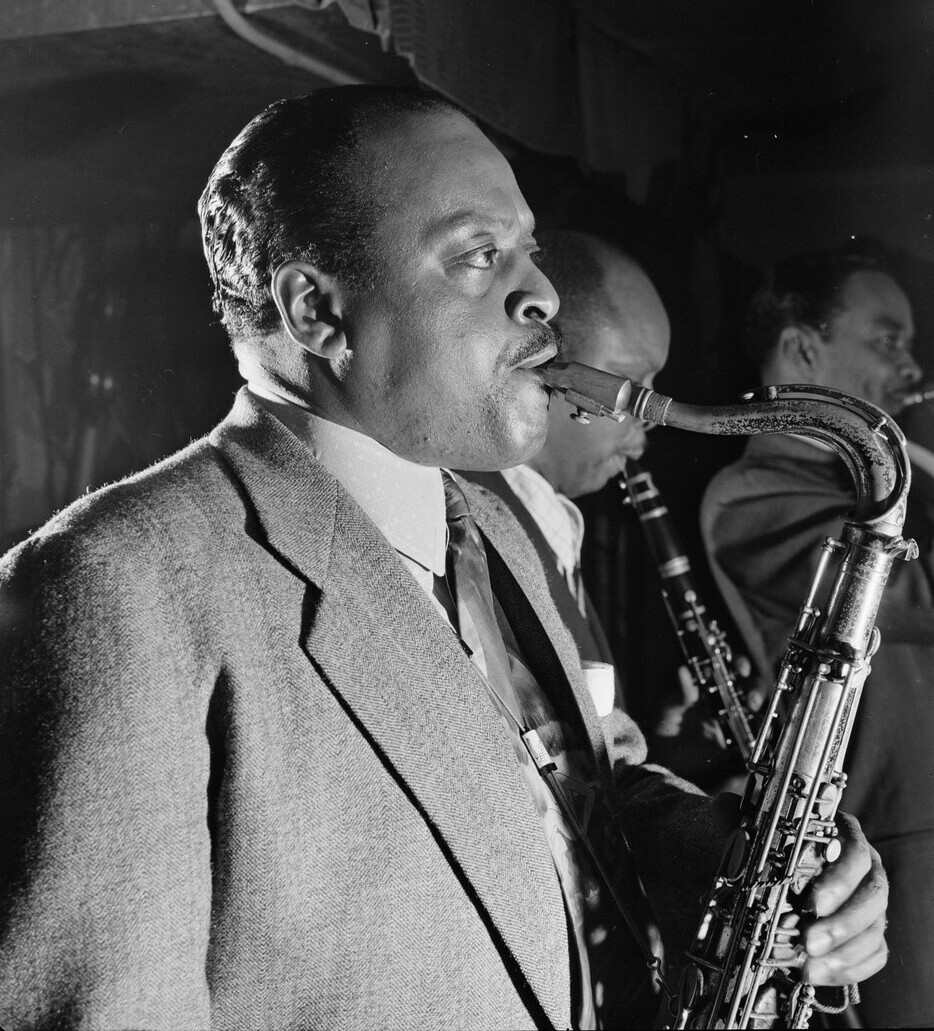
Ben Webster (1909-1973) was a tenor saxophonist who played a major role in the development of Kansas City jazz. He was born and raised in Kansas City, Missouri, and he began playing saxophone at a young age. He was influenced by Coleman Hawkins, but he developed his own unique style, which was characterized by its warm, full sound and its soulful improvisations.
Webster played in several bands in Kansas City before joining Count Basie’s band in 1940. He remained with Basie’s band for three years and played a major role in developing the band’s distinctive sound. Webster was one of the band’s most featured soloists, and he helped to popularize the Kansas City style of swing music.
After leaving Basie’s band in 1943, Webster moved to New York City, where he began a freelance career. He played and recorded with many famous jazz musicians, including Billie Holiday, Duke Ellington, and Coleman Hawkins. He also worked as a studio musician and played on many hit records.
In the 1950s, Webster moved to Europe, where he lived for the rest of his life. He continued to play and record with many famous jazz musicians and became a popular educator. He taught at several universities, and he wrote a book on saxophone playing.
Webster died in Amsterdam, Netherlands, in 1973. He is considered one of the greatest tenor saxophonists of all time. He was known for his warm, full sound, soulful improvisations, and contributions to the development of Kansas City jazz.
Jimmy Rushing
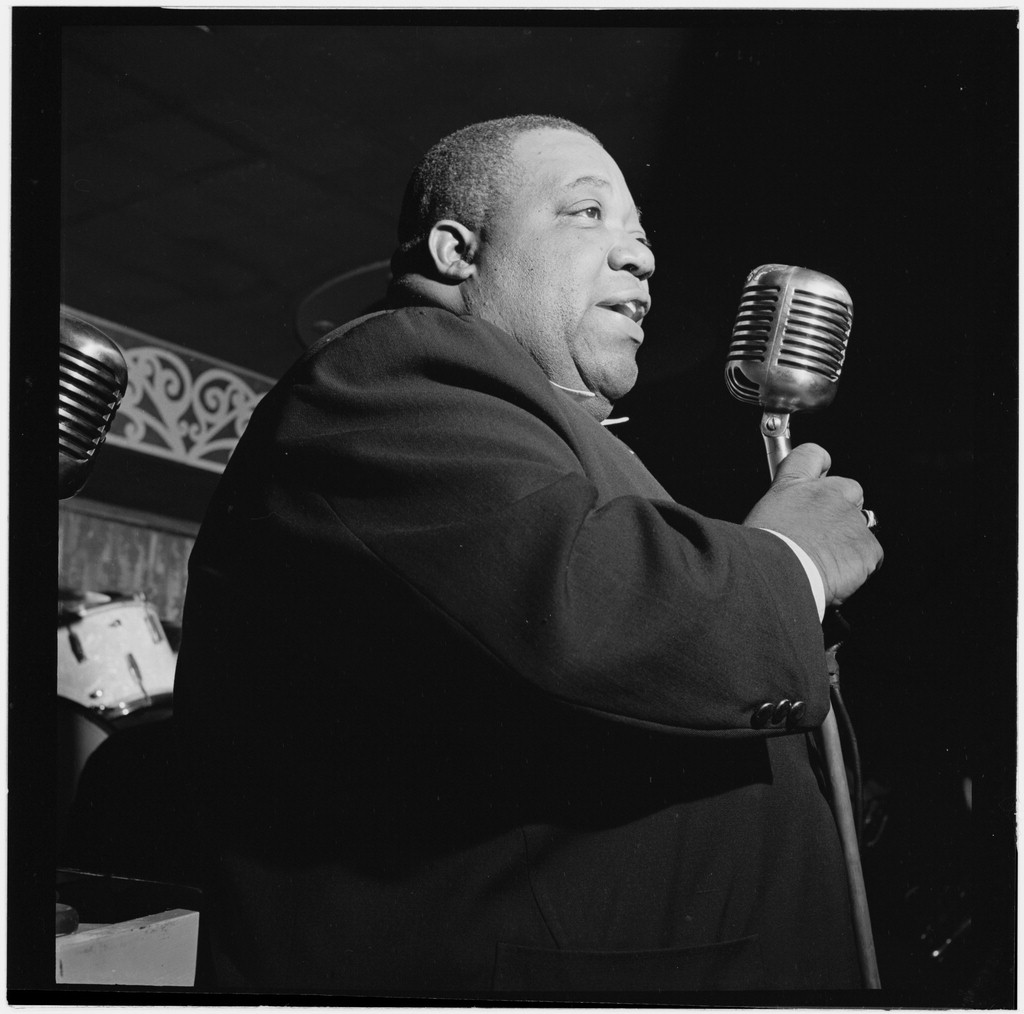
Jimmy Rushing (1903-1972) was a singer and blues shouter who played a major role in the development of Kansas City jazz. He was born and raised in Oklahoma City, Oklahoma, and he began singing at a young age. He moved to Kansas City in 1927 and quickly established himself as one of the best singers in the city.
Rushing was known for his powerful voice and his soulful singing style. He was also a skilled improviser, and he was able to create complex and exciting vocal melodies. He was also a talented songwriter, and he wrote several tunes that became jazz standards, including “Sent for You Yesterday” and “Boogie Woogie.”
Rushing sang with several bands in Kansas City before joining Count Basie’s band in 1935. He remained with Basie’s band for over a decade and played a major role in developing the band’s distinctive sound. Rushing was one of the band’s most featured soloists, and he helped to popularize the Kansas City style of swing music.
Rushing left Basie’s band in 1948 and began a freelance career. He played and recorded with many famous jazz musicians, including Billie Holiday, Lester Young, and Charlie Parker. He also worked as a studio musician and played on many hit records.
Rushing continued to play and record until his death in 1972. He is considered one of the most important singers in the history of jazz. He is known for his powerful voice, soulful singing style, and contributions to the development of Kansas City jazz.
Walter Page
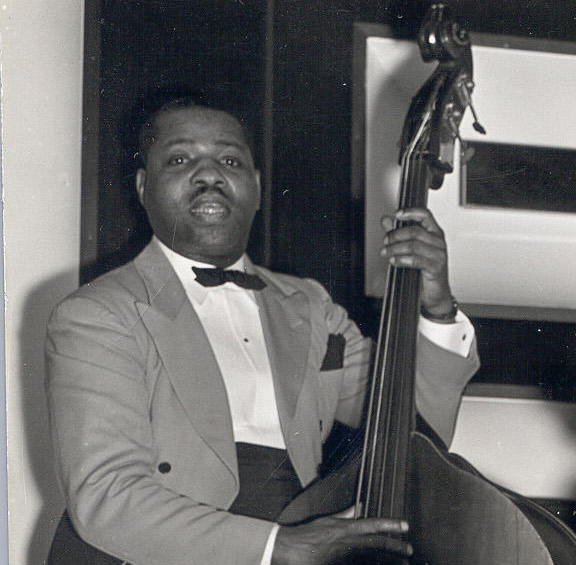
Walter Page (1900-1957) was a bassist who played a major role in the development of Kansas City jazz. He was born and raised in Gallatin, Missouri, and began playing bass at a young age. He moved to Kansas City in 1910 and quickly established himself as one of the best bassists in the city.
Page was known for his innovative playing style. He was one of the first bassists to use the “walking bass” technique, which involves playing a continuous line of notes instead of just playing the root of the chord. He was also a skilled improviser, and he was able to create complex and exciting bass lines.
Page played in several bands in Kansas City before forming his own band, Walter Page’s Blue Devils, in 1925. The Blue Devils were one of the most popular bands in Kansas City during the late 1920s and early 1930s. The band was known for its tight musicianship, its driving rhythms, and Page’s powerful bass playing.
In 1931, Page joined Count Basie’s band. He remained with Basie’s band for over a decade and played a major role in developing the band’s distinctive sound. Page was one of the band’s most featured soloists, and he helped to popularize the Kansas City style of swing music.
Page left Basie’s band in 1942 and began a freelance career. He played and recorded with many famous jazz musicians, including Billie Holiday, Lester Young, and Charlie Parker. He also worked as a studio musician and played on many hit records.
Page continued to play and record until his death in 1957. He is considered one of the most important bassists in the history of jazz. He is known for his innovative playing style, powerful bass lines, and contributions to the development of Kansas City jazz.
Jimmie Lunceford
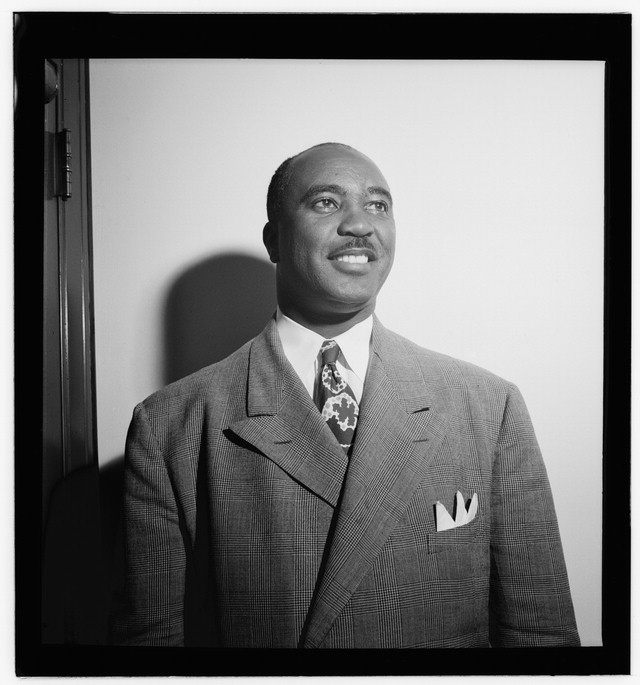
Jimmie Lunceford (1902-1947) was a bandleader, saxophonist, and arranger who played a major role in the development of Kansas City jazz. He was born and raised in Fulton, Missouri, and began playing saxophone at a young age. He attended Fisk University in Nashville, Tennessee, where he studied music and education. After graduating from Fisk in 1926, Lunceford moved to Memphis, Tennessee, where he taught music at Manassas High School.
In 1927, Lunceford formed a student band at Manassas High School called the Chickasaw Syncopators. The band quickly became popular in Memphis, and in 1929, Lunceford decided to turn professional. The band changed its name to the Jimmie Lunceford Orchestra and began touring throughout the United States.
The Jimmie Lunceford Orchestra was one of the most popular bands in the country during the 1930s and 1940s. The band was known for its tight musicianship, innovative arrangements, and smooth, sophisticated sound. Lunceford was a skilled arranger, and he wrote many of the band’s biggest hits, including “Jazznocracy,” “Uptown Blues,” and “Rhythm is Our Business.”
The Jimmie Lunceford Orchestra was also one of the first black bands to achieve mainstream success. The band appeared in several Hollywood films and toured extensively throughout the United States and Europe. Lunceford was also a strong advocate for civil rights and often spoke out against racism and discrimination.
Lunceford died in 1947 at the age of 44 from a heart attack. He is considered one of the most important figures in the development of Kansas City jazz. The Jimmie Lunceford Orchestra was one of the most popular and successful bands of the era, and it helped to break down racial barriers in the music industry.
George E. Lee

George E. Lee (1896-1958) was a bandleader and singer who played an important role in the development of Kansas City jazz. He was born and raised in Kansas City, Missouri, and began performing in the early 1920s. He led a band that was one of the most popular in Kansas City during the 1920s and early 1930s. His band was known for its driving rhythms, catchy melodies, and Lee’s powerful vocals.
Lee’s band was also known for its innovative arrangements. Lee hired several talented musicians, including arranger Jesse Stone, who helped develop the band’s distinctive sound. The band’s arrangements were characterized by their use of counterpoint and their complex harmonies.
Lee’s band was also one of the first bands in Kansas City to feature a female vocalist. Lee’s sister, Julia Lee, was a popular singer with the band. She was known for her raunchy lyrics and her sultry singing style.
Lee’s band was very successful in Kansas City and toured extensively throughout the United States. However, the band began to decline in the mid-1930s. Lee had a falling out with his arranger, Jesse Stone, and he also lost some of his best musicians to other bands.
Lee continued to perform and record throughout the 1940s and 1950s, but he never achieved the same success as in the 1920s and early 1930s. He died in Kansas City in 1958 at the age of 62.
George E. Lee was an important figure in the development of Kansas City jazz. His band was one of the city’s most popular and innovative bands during the 1920s and early 1930s. He also helped popularize the Kansas City jazz style throughout the United States.
Julia Lee
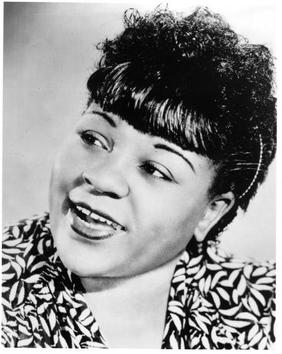
Julia Lee (1902-1958) was a singer and pianist who significantly developed Kansas City jazz. She was born and raised in Kansas City, Missouri, and began singing and playing piano at a young age. She performed with her family’s musical group in the 1910s and 1920s and became one of the most popular performers in the city.
In the 1930s, Lee began recording for various labels, and she released several hit records, including “Come on Over to My House Baby” and “Snatch and Grab It.” She was known for her raunchy lyrics and her sultry singing style. She was also a talented pianist who often accompanied herself on her recordings.
Lee continued to perform and record throughout the 1940s and 1950s. She toured extensively throughout the United States and performed in Europe. She was a popular performer with both black and white audiences and helped break down racial barriers in the music industry.
Lee died in Kansas City in 1958 at the age of 55. She is considered one of the most important figures in the history of Kansas City jazz. Her music continues to be played and enjoyed by musicians and fans around the world.
King Kolax
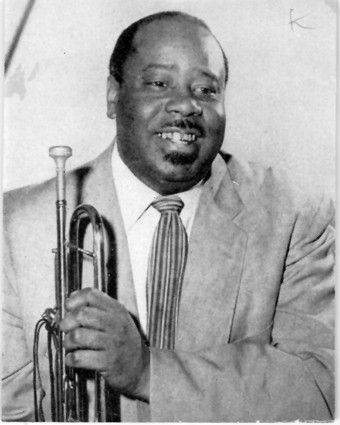
King Kolax (1912-1972), born William Little, was a tenor saxophonist, clarinetist, bandleader, and record producer who played a significant role in developing Kansas City jazz. He was born and raised in Kansas City, Missouri, and began playing saxophone at a young age. He studied music at the Chicago Conservatory of Music in the early 1930s and played in dance bands in Chicago during the decade. Around 1938, he became bandleader of one of the groups; this ensemble toured the U.S. and continued playing regularly at venues such as the Savoy Theater and the 65 Club. In 1939, Charlie Parker played in his band. Kolax formed another band in 1943 and again toured the American South.
Kolax was known for his powerful playing and his soulful improvisations. He was also a skilled composer and arranger. He composed several tunes for his own bands and other groups, such as Count Basie and Jay McShann.
In the 1950s and 1960s, Kolax continued to play and record with various groups. He also worked as a record producer for Marvello Records, owned by the Chicago businessman James P. Johnson, between 1961 and 1965.
Kolax died in Chicago in 1972 at the age of 59. He is considered one of the most important figures in the history of Kansas City jazz. His music continues to be played and enjoyed by musicians and fans around the world.
Jo Jones
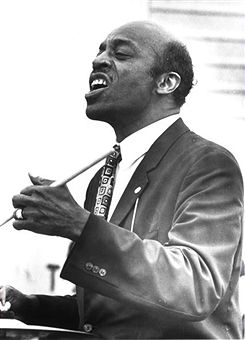
Jo Jones (1911-1985) was a drummer who played a major role in the development of Kansas City jazz and swing music. He was born and raised in Kansas City, Missouri, and began playing drums at a young age. He played in various bands in Kansas City throughout the 1920s and 1930s and quickly established himself as one of the most talented drummers in the city.
Jones was known for his innovative drumming style. He was one of the first drummers to focus on keeping time with the hi-hat cymbal and one of the first drummers to use brushes on the drums. He was also a skilled improviser, and he was able to create complex and exciting rhythms.
In 1934, Jones joined Count Basie’s band. He remained with Basie’s band for over a decade and played a major role in developing the band’s distinctive sound. Jones was one of the band’s most featured soloists, and he helped to popularize the Kansas City style of swing music.
Jones left Basie’s band in 1948 and began a freelance career. He played and recorded with many famous jazz musicians, including Billie Holiday, Lester Young, and Charlie Parker. He also worked as a studio musician and played on many hit records.
Jones continued to play and record until his death in 1985. He is considered one of the most important drummers in the history of jazz and played a major role in the development of Kansas City jazz and swing music.
In addition to his musical contributions, Jones is remembered for his kind and generous personality. He was a mentor to many young musicians, and he was always willing to help others. He was also a popular figure in the Kansas City community, and he was known for his love of life and his enjoyment of music.
Pete Johnson
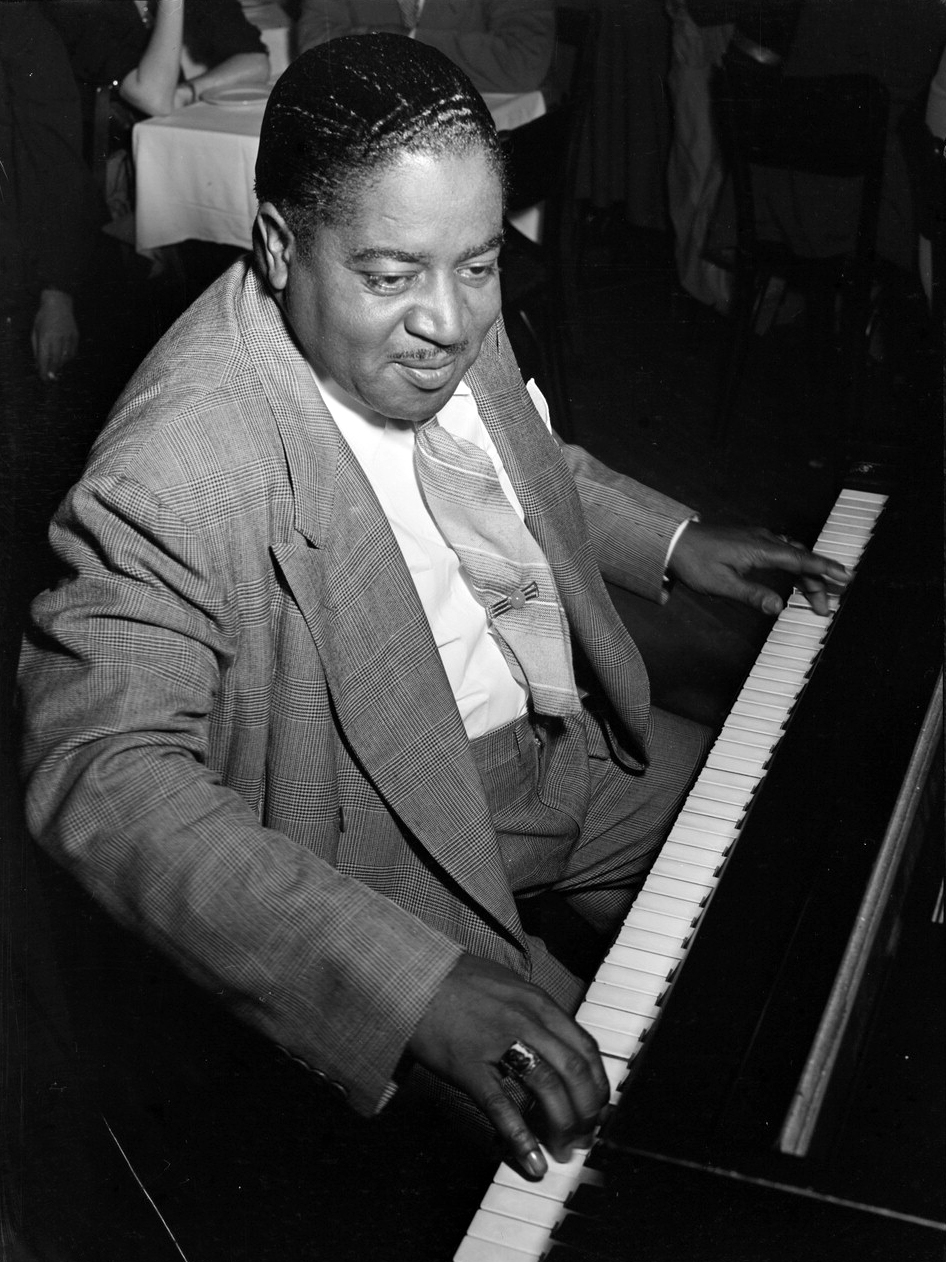
Pete Johnson (1904-1967) was a pianist who played a major role in developing Kansas City jazz. He was born and raised in Kansas City, Missouri, and he began playing piano at a young age. He played in various bands in Kansas City throughout the 1920s and 1930s and quickly established himself as one of the most talented pianists in the city.
Johnson was known for his driving, boogie-woogie style of playing. He was also a skilled improviser who could create complex and exciting solos. He was also a popular accompanist and played with many famous jazz singers, including Big Joe Turner, Billie Holiday, and Helen Humes.
In 1938, Johnson appeared at the Carnegie Hall “From Spirituals to Swing” concert, which helped to introduce boogie-woogie to a wider audience. He also recorded extensively throughout his career and released several hit records, including “Roll ‘Em Pete” and “Boogie Woogie Man.”
Johnson continued to play and record until his death in 1967. He is considered one of the most important pianists in the history of Kansas City jazz, and he played a major role in the development of boogie-woogie.
In addition to his contributions to Kansas City jazz, Johnson is remembered for his sense of humor and outgoing personality. He was a popular figure among the other musicians in the Kansas City jazz scene, and he was known for his love of life and his enjoyment of music.
Herschel Evans
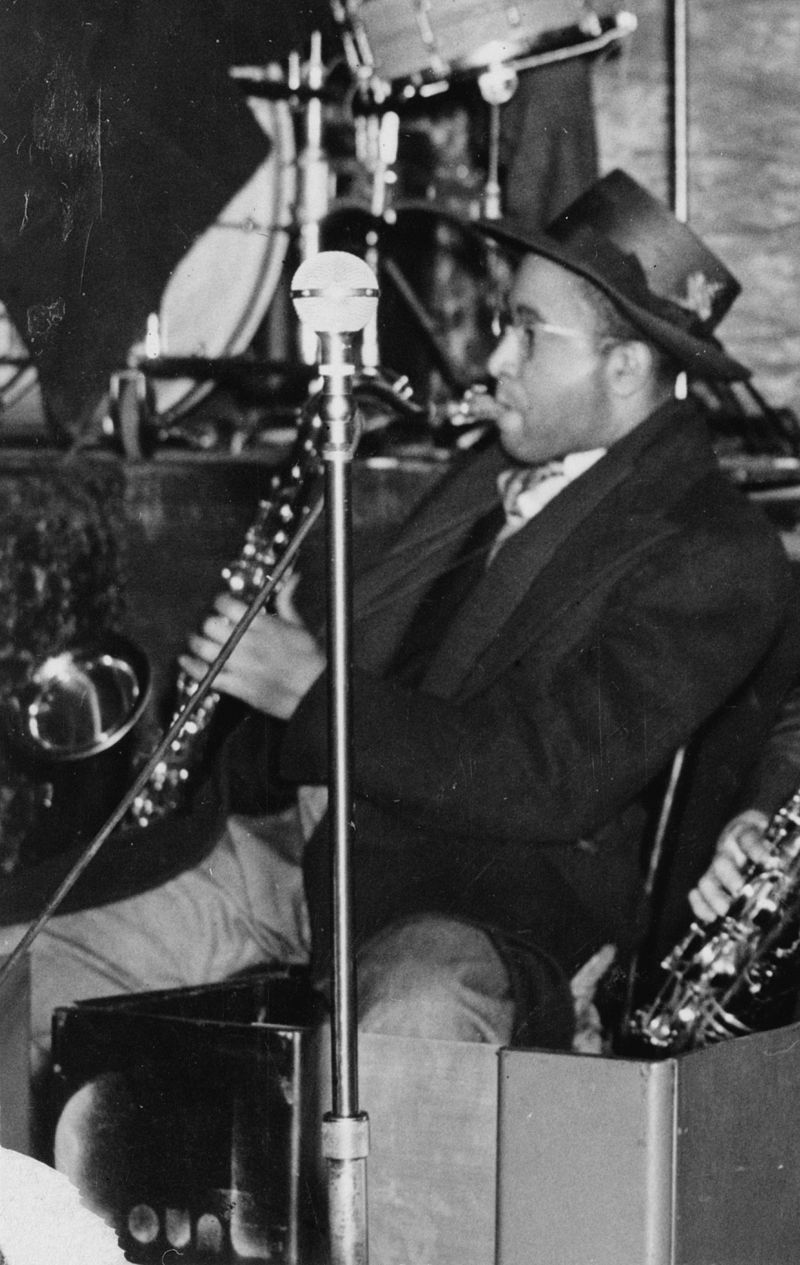
Herschel Evans (1909-1939) was a tenor saxophonist who significantly developed Kansas City jazz. He was born in Denton, Texas, and began playing saxophone at a young age. He moved to Kansas City in the 1920s and quickly established himself as one of the most talented saxophonists in the city.
Evans played with several bands in Kansas City, including Bennie Moten’s and Count Basie’s bands. He was known for his powerful playing and his soulful improvisations. He was also a skilled composer and arranger. He composed several tunes for Basie’s band, including “Texas Shuffle” and “Doggin’ Around.”
Evans was a member of Basie’s band from 1936 until his death in 1939. He was one of the band’s most featured soloists and helped develop the band’s distinctive sound. He was also a popular figure among the other musicians in the band.
Evans died in 1939 at the age of 29 from pneumonia. He was one of the most promising young musicians in Kansas City jazz, and his death was a major loss to the music community.
Despite his short career, Evans had a major impact on the development of Kansas City jazz. He was one of the most talented saxophonists in the city, and he helped to develop the band’s distinctive sound. He was also a popular figure among the other musicians in the band.
Evans’ legacy continues to live on through his music and influence on other musicians. He is considered one of the most important figures in the history of Kansas City jazz.
Maxwell Davis
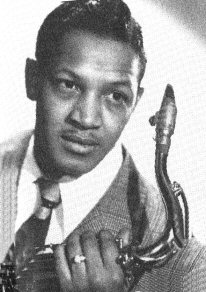
Maxwell Davis (1916-1970) was a saxophonist, bandleader, arranger, and record producer who played a significant role in the development of Kansas City jazz and West Coast R&B. He was born in Independence, Kansas, and began playing saxophone at a young age. In 1937, he moved to Los Angeles to pursue a career in music.
Davis quickly established himself as a versatile and talented musician. He played with several bands in the Los Angeles area, including Fletcher Henderson’s orchestra and Jay McShann’s band. He also began arranging and producing records for various labels.
In the mid-1940s, Davis became involved in the West Coast R&B scene. He arranged and produced records for many popular R&B artists, including Percy Mayfield, Peppermint Harris, and Clarence “Gatemouth” Brown. He also led his own R&B band, which featured many of the top musicians in the Los Angeles area.
In the 1950s and 1960s, Davis continued to work as an arranger and producer. He also led his own big band, which played a mix of jazz and R&B. He also worked as a composer and wrote several tunes that became jazz standards, including “Jeannine” and “Blues By Five.”
Davis was a highly respected musician, and he was known for his versatility, his talent, and his willingness to help others. He was a mentor to many young musicians, and he played a major role in the development of West Coast R&B.
Davis died in Los Angeles in 1970 at the age of 53. He is considered one of the most important figures in the history of Kansas City jazz and West Coast R&B. His music continues to be played and enjoyed by musicians and fans around the world.
Buck Clayton
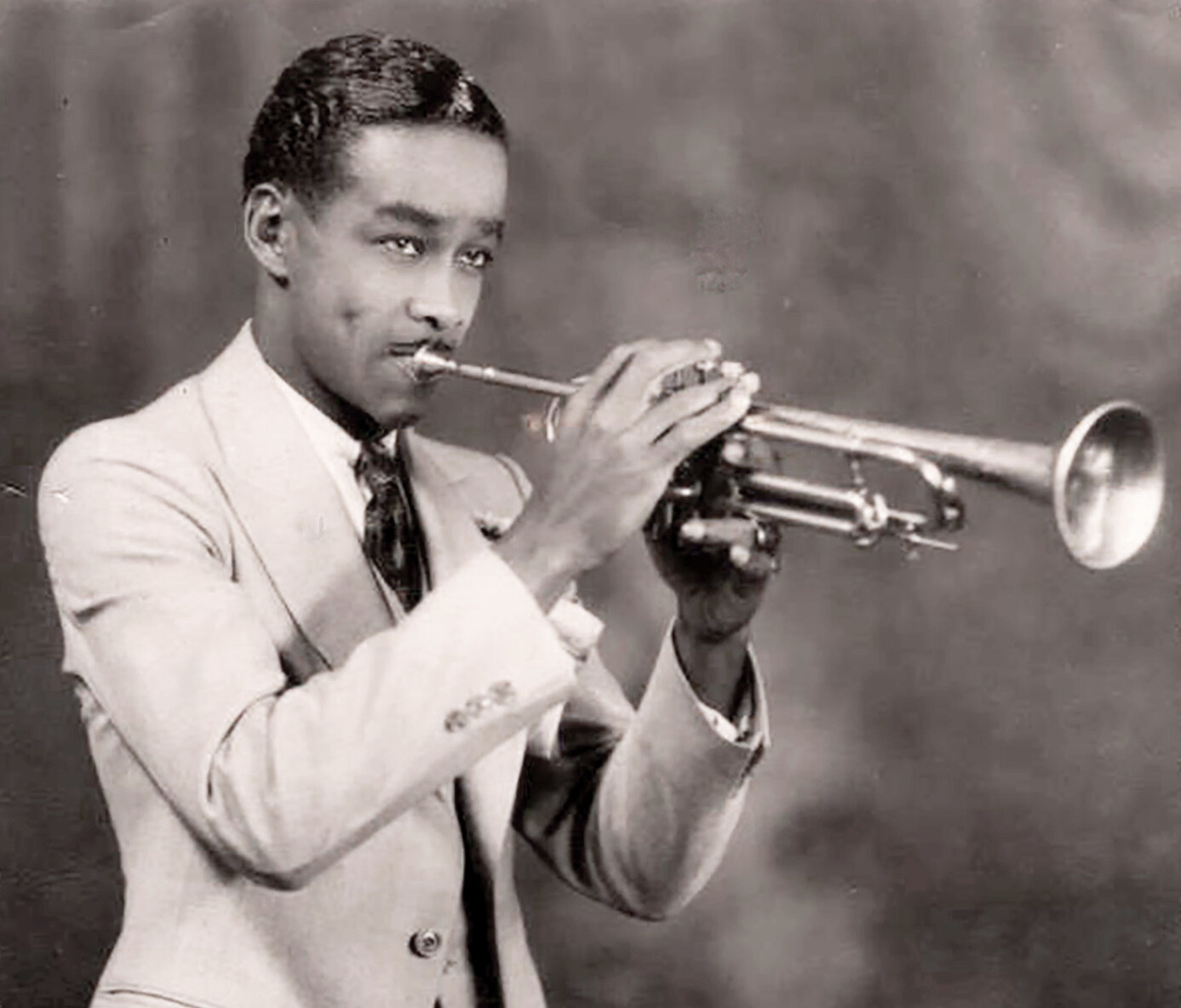
Buck Clayton (1911-1991) was a trumpet player who played a major role in developing Kansas City jazz. He was born and raised in Parsons, Kansas, and began playing trumpet at a young age. He moved to California in 1932 and played with several bands in the Los Angeles area. In 1936, he joined Count Basie’s band, and he played with Basie’s band for over a decade.
Clayton was a master of the trumpet, and he was known for his warm, lyrical sound and his tasteful improvisations. He was also a skilled composer and arranger. He composed several tunes for Basie’s band, including “Jumpin’ at the Woodside” and “Swingin’ the Blues.”
Clayton left Basie’s band in 1947 and began playing with various groups in New York City. He also worked as a studio musician and played on recordings by many famous musicians, including Billie Holiday, Duke Ellington, and Lester Young.
In the 1950s and 1960s, Clayton led his big band, touring extensively throughout the United States and Europe. He also taught at several universities and was a popular clinician at jazz workshops.
Clayton was a highly respected musician, and he was known for his humility and his willingness to help others. He was a mentor to many young musicians, and he played a major role in the development of jazz education.
Clayton continued to play music until his death in 1991. He was one of the most important trumpet players in the history of jazz and played a major role in developing the Kansas City jazz style. He was also a skilled composer, arranger, and popular educator.
Clayton’s legacy continues to live on. His music is still played and enjoyed by musicians and fans around the world. He is considered one of the greatest trumpet players of all time.
Earl Caruthers

Earl Caruthers (1910-1971) was a saxophonist who played a major role in developing Kansas City jazz. He was born and raised in Kansas City and began playing saxophone at a young age. He studied at Fisk University in Nashville, Tennessee, then returned to Kansas City to begin his professional career.
In 1928, Caruthers joined Bennie Moten’s band, one of the most popular bands in Kansas City at the time. He played with Moten’s band for several years, and he was one of the key soloists in the band. After Moten’s death in 1935, Caruthers joined Jimmie Lunceford’s band, another popular Kansas City band. He played with Lunceford’s band for over a decade and was one of the band’s most featured soloists.
Caruthers was a master of the tenor saxophone, and he was known for his big, full sound and his soulful improvisations. He was also a skilled composer and arranger. He composed several tunes for Lunceford’s band, including “Sweet Sue” and “Swingin’ the Cats.”
Caruthers left Lunceford’s band in 1947, and he began playing with various groups in Kansas City. He also worked as a milkman to support his family. He continued to play music until his death in 1971.
Caruthers was one of the most important saxophonists in the history of Kansas City jazz. He was a master of the tenor saxophone and played a major role in developing the Kansas City jazz style. He was also a skilled composer and arranger.
Caruthers’ legacy continues to live on. His music is still played and enjoyed by musicians and fans around the world. He is considered to be one of the greatest saxophonists of all time.
John Hammond
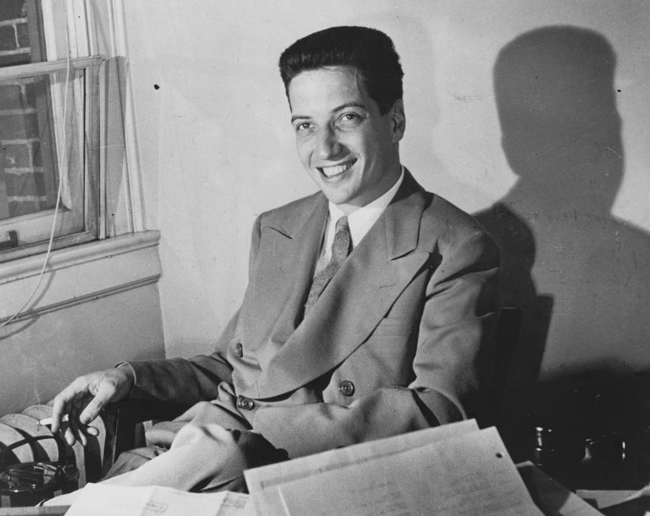
John Hammond was a record producer and music critic who played a major role in developing Kansas City jazz. He was one of the first people to recognize the talent of the musicians playing in Kansas City in the early 1930s, and he helped bring them to the attention of the wider world.
In 1936, Hammond traveled to Kansas City to hear Count Basie’s band perform. He was so impressed by what he heard that he immediately began to work on getting them a record deal. He convinced Columbia Records to sign the band, and their first recording session took place in December 1936.
Hammond also helped to launch the careers of other notable Kansas City jazz musicians, including Lester Young, Ben Webster, and Charlie Parker. He was a champion of their music and helped promote them to record labels and audiences alike.
Hammond’s work was instrumental in helping to make Kansas City jazz known to the world. He was a true pioneer of the genre, and his legacy continues to be felt today.
In addition to his work with Kansas City jazz, Hammond also played a major role in the development of other genres of American music, including blues, folk, and rock and roll. He was responsible for discovering and producing some of the biggest names in music, including Billie Holiday, Bob Dylan, and Bruce Springsteen.
Hammond was a visionary producer who deeply understood music and culture. He was also a passionate advocate for African-American artists and helped break down racial barriers in the music industry.
Hammond died in 1987, but his legacy continues to live on. He is considered one of the most important figures in the history of American music.
The Hey-Hay Club
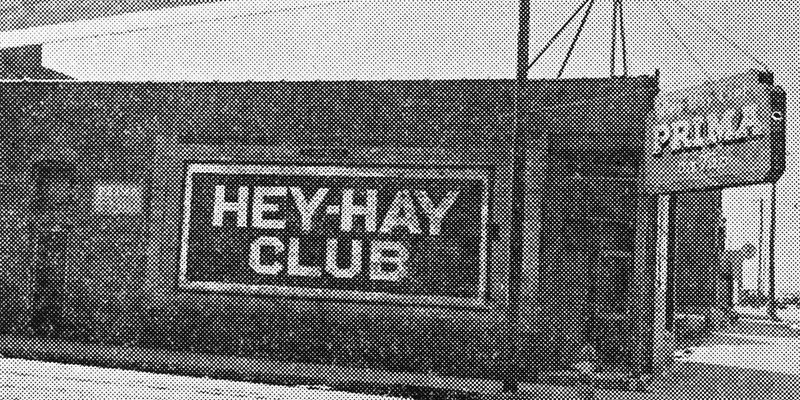
The Hey-Hay Club was a jazz club in Kansas City, Missouri that operated from 1931 to 1938. It was located at 4th and Cherry Streets in the heart of Kansas City’s jazz district. The club was owned and operated by Milton Morris, a well-known entrepreneur and saloon owner throughout the 1930s.
During its operation, the Hey-Hay Club was one of the most popular jazz clubs in Kansas City. It was known for its intimate atmosphere, high-quality sound system, and diverse lineup of performers. The club was a popular spot for locals and tourists alike, and it was one of the few places where African Americans could come to dance and listen to jazz music.
Some notable jazz musicians performing at the Hey-Hay Club included Count Basie, Lester Young, Ben Webster, and Charlie Parker. The club was also a popular spot for jam sessions, and it was one of the places where the new style of jazz known as bebop was developed.
The Hey-Hay Club closed its doors in 1938 due to financial difficulties. However, it remains an important landmark in the history of Kansas City jazz. It was where some of the greatest jazz musicians of all time performed, and it played a major role in the development of swing and bebop.
The Hey-Hay Club was also notable for its unique decor. The club was furnished with hay bales and other rustic items, and there was even a stage that was made out of a hay wagon. The club’s unique decor helped to create a warm and inviting atmosphere, and it was one of the things that made the club so popular with patrons.
The Hey-Hay Club was a unique and important jazz club in the history of Kansas City. It was where some of the greatest jazz musicians of all time performed, and it played a major role in the development of swing and bebop. The club’s unique decor and intimate atmosphere also made it a popular spot for locals and tourists.
In 1996, filmmaker Robert Altman memorialized the Hey Hay Club in his film, “Kansas City”. He changed the spelling of the name slightly for his fictionalized version, and the sign at the entrance is the movie prop used in the film.
Today, the Hey-Hay Club site is home to the J. Rieger & Co. distillery. The distillery has a bar called “The Hey! Hey! Club” as a tribute to the legendary jazz club that once stood on the same spot.
Dante’s Inferno
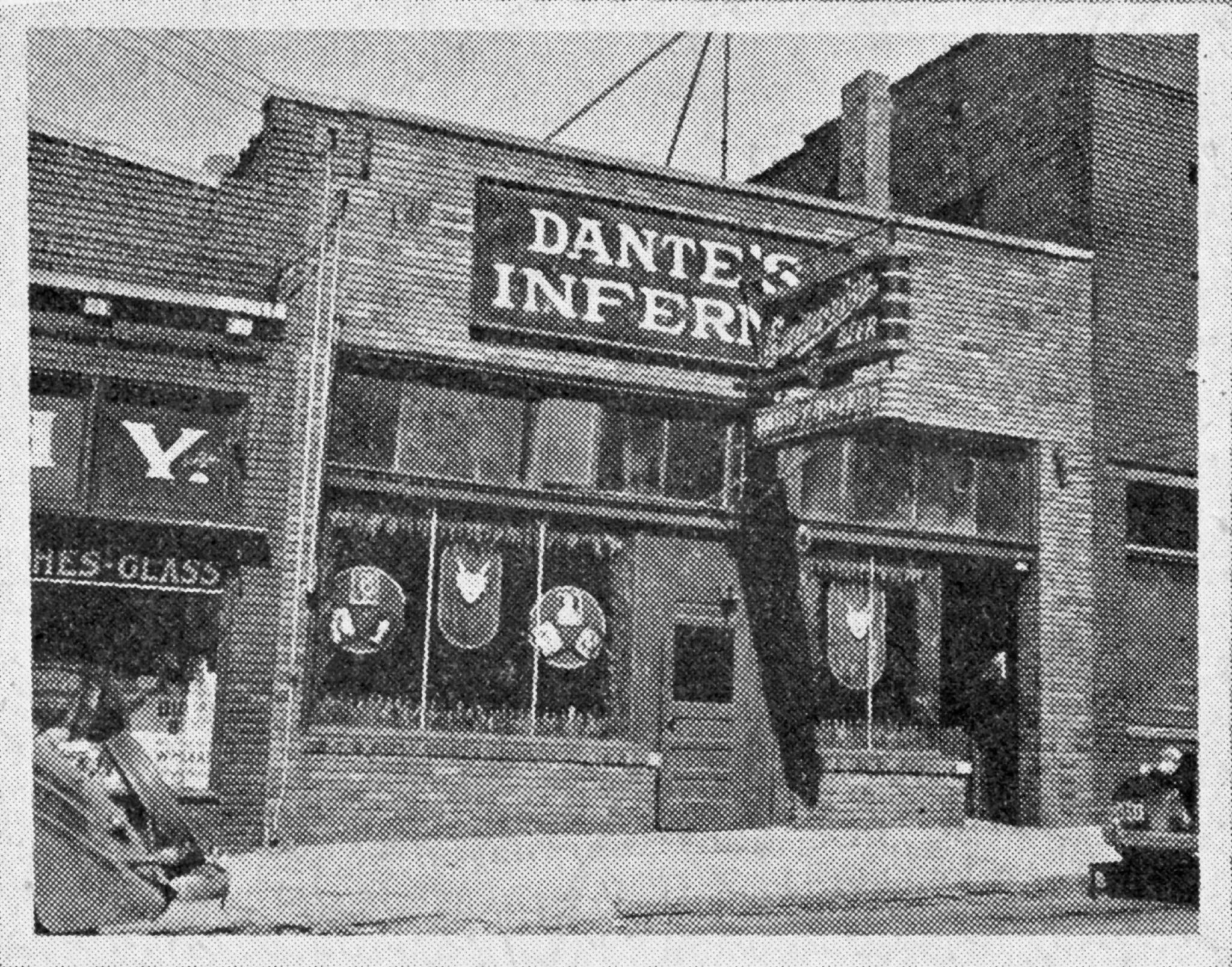
Dante’s Inferno was a jazz club in Kansas City, Missouri, operated from 1933 to 1938. It was located at 1818 Vine Street in the heart of Kansas City’s jazz district. The club was owned and operated by Joe Lusco, an associate of organized crime boss Tom Pendergast.
Dante’s Inferno was one of the most popular nightclubs in Kansas City during its operation. It was known for its decadent atmosphere, lavish shows, and diverse lineup of performers. The club was a popular spot for locals and tourists alike, and it was one of the few places where African Americans could come to dance and listen to jazz music.
Some notable jazz musicians who performed at Dante’s Inferno included Count Basie, Lester Young, Ben Webster, and Charlie Parker. The club was also a popular spot for drag shows and other forms of burlesque entertainment.
Dante’s Inferno closed its doors in 1938 due to legal troubles. The club was known for its association with organized crime, and the government was determined to shut it down.
Despite its short lifespan, Dante’s Inferno played a major role in developing Kansas City jazz. It was a place where some of the greatest jazz musicians of all time performed, and it helped popularize the Kansas City jazz style.
Dante’s Inferno was also a notable example of the city’s “wide open” era, during which organized crime flourished, and speakeasies and nightclubs were plentiful. The club’s decadent atmosphere and lavish shows reflected the city’s freewheeling spirit during this period.
The Paseo Ballroom
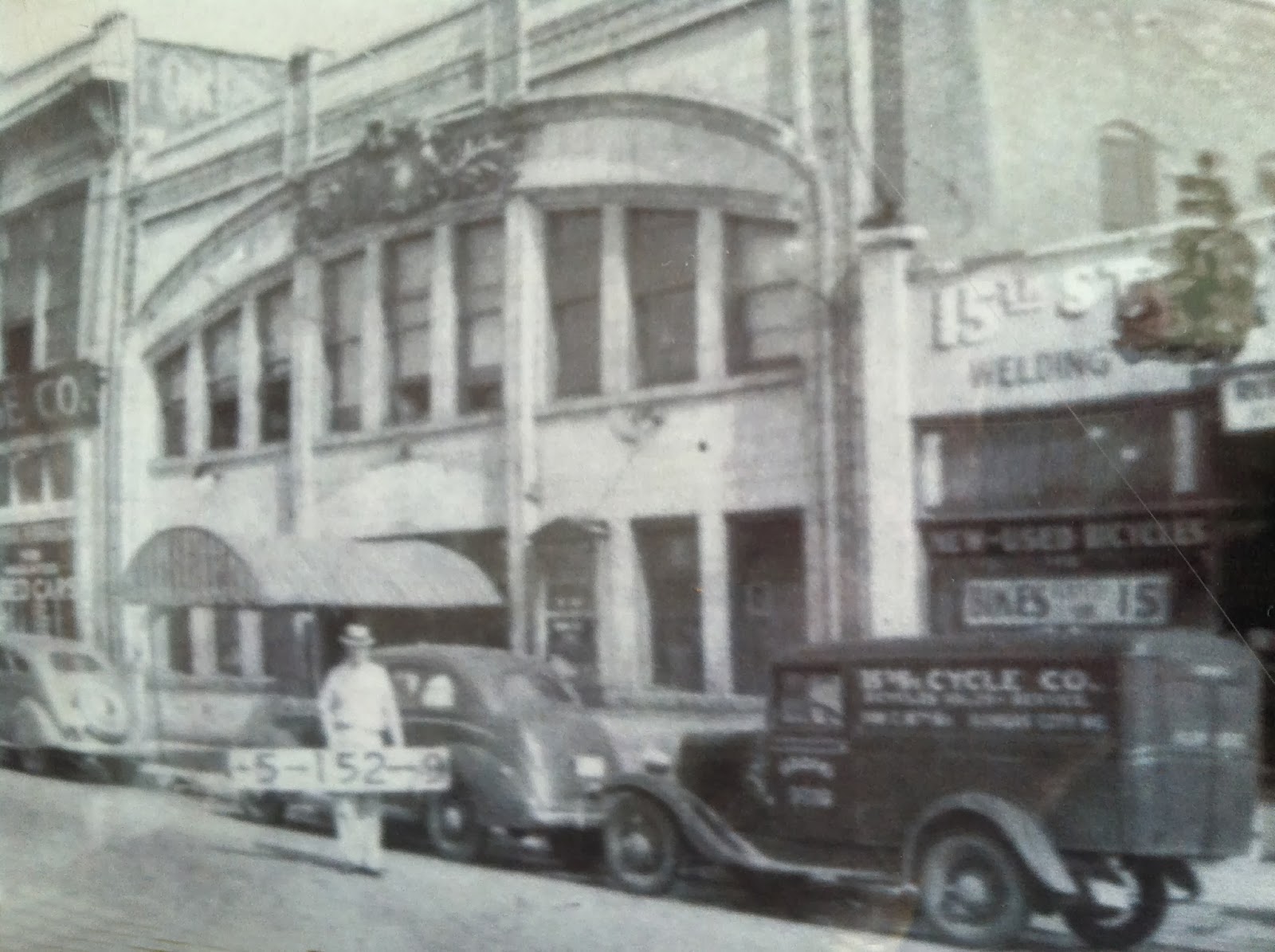
The Paseo Ballroom, located at 15th and Paseo Boulevard in Kansas City, Missouri, was one of the most popular and influential jazz venues in the United States during the 1920s and 1930s. It was known for its large dance floor, high-quality sound system, and diverse lineup of performers.
The Paseo Ballroom was opened in 1924 by Bennie Moten, one of the most successful and respected bandleaders in Kansas City at the time. Moten’s band played at the ballroom regularly, and it was also a popular spot for other jazz musicians, including Count Basie, Charlie Parker, and Lester Young.
The Paseo Ballroom was a major center for the development of swing music, and it was one of the first places where the new style of jazz was played for a large audience. The ballroom was also a popular spot for African Americans, and it was one of the few places in Kansas City where they could dance and socialize together.
The Paseo Ballroom closed its doors in 1942, but it remains an important landmark in the history of jazz music. It was where some of the greatest jazz musicians of all time performed, and it played a major role in developing swing music.
In 2016, the Paseo Ballroom was reopened as a jazz club and event space. The new ballroom is at 1815 East 15th Street in Kansas City, Missouri. It is a beautiful and historic space dedicated to preserving the legacy of the original Paseo Ballroom.
The Pla-Mor Ballroom
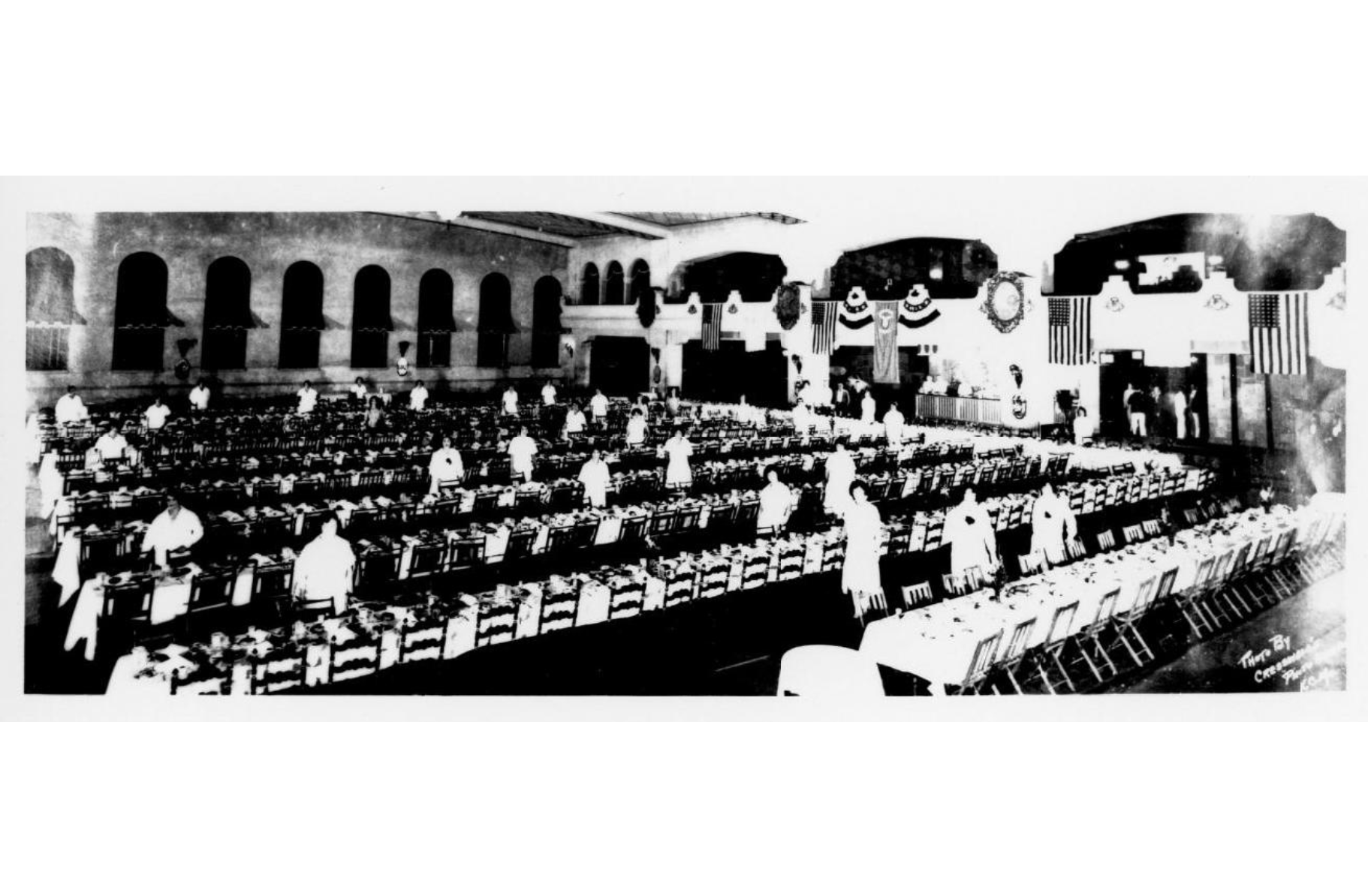
The Pla-Mor Ballroom was a popular jazz venue and entertainment complex that operated in Kansas City, Missouri, from 1927 to 1951. It was located at 3142 Main Street in the heart of Kansas City’s jazz district. The ballroom was owned and operated by Paul M. Fogel, a local businessman with a vision for a world-class entertainment destination.
The Pla-Mor Ballroom was one of the largest and most luxurious ballrooms in the United States at the time of its opening. It featured a massive dance floor, a state-of-the-art sound system, and a variety of other amenities, including a bowling alley, billiards room, ice skating rink, and swimming pool. The ballroom was also decorated in an elegant style, with marble floors, crystal chandeliers, and velvet drapes.
The Pla-Mor Ballroom quickly became a popular spot for locals and tourists. It was known for its high-quality entertainment, elegant atmosphere, and diverse clientele. The ballroom hosted a wide range of performers, including jazz bands, big bands, and popular singers. Some of the most famous musicians who played at the Pla-Mor Ballroom included Count Basie, Louis Armstrong, Ella Fitzgerald, and Frank Sinatra.
The Pla-Mor Ballroom played a significant role in developing Kansas City jazz. It was a place where jazz musicians could come to perform for a large and appreciative audience. The ballroom also helped to promote Kansas City as a major center for jazz music.
The Pla-Mor Ballroom closed its doors in 1951 due to financial difficulties. However, its legacy continues to live on. The ballroom is remembered as one of the most important venues in the history of Kansas City jazz. It was where some of the greatest jazz musicians of all time performed, and it played a major role in popularizing the Kansas City style of jazz.
In 1971, the site of the Pla-Mor Ballroom was demolished to build a car dealership. However, the ballroom’s memory is preserved in the hearts of Kansas City residents and jazz fans around the world.
The Cherry Blossom Club
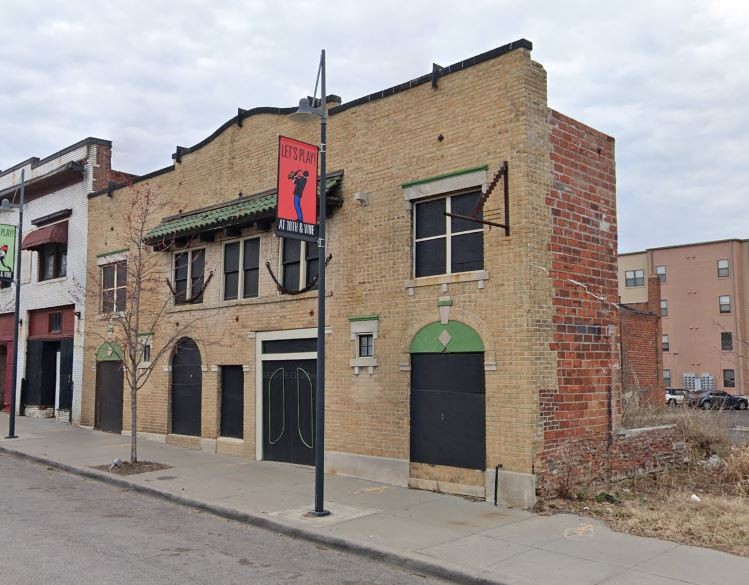
The Cherry Blossom Club was a jazz club in Kansas City, Missouri, that operated from 1933 to 1942. It was one of the country’s most popular and influential jazz venues during that time. The club was at 1822 Vine Street in the heart of Kansas City’s jazz district.
The Cherry Blossom Club was opened by Ananias Buford, a local businessman. Buford wanted to create a club where African Americans could come to dance and listen to jazz music. The club was quickly a success, becoming a popular spot for locals and tourists alike.
The Cherry Blossom Club was a major center for developing swing music and was one of the places where the Count Basie Orchestra got its start. Other notable jazz musicians who performed at the Cherry Blossom Club included Charlie Parker, Lester Young, and Ben Webster.
The Cherry Blossom Club closed its doors in 1942, but it remains an important landmark in the history of jazz music. It was where some of the greatest jazz musicians of all time performed, and it played a major role in developing swing music.
The Reno Club
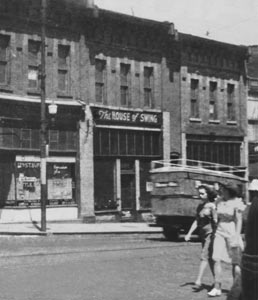
The Reno Club was a jazz club in Kansas City, Missouri that operated from 1931 to 1942. It was one of the country’s most popular and influential jazz venues during that time. The club was at 12th and Cherry Streets in the heart of Kansas City’s jazz district.
The Reno Club was owned and operated by Tom Pendergast, a powerful political figure known for his ties to organized crime. Pendergast used the club to promote his political career and to entertain his associates. The club was also a popular spot for jazz musicians, and it was one of the first places where the new style of jazz, known as swing music, was played for a large audience.
The Reno Club was a major center for developing swing music and was one of the places where the Count Basie Orchestra started. Other notable jazz musicians who performed at the Reno Club included Charlie Parker, Lester Young, and Ben Webster.
The Reno Club closed its doors in 1942, but it remains an important landmark in the history of jazz music. It was where some of the greatest jazz musicians of all time performed, and it played a major role in developing swing music.
In 2022, a new jazz club called Lonnie’s Reno Club opened in Kansas City. The club is named after Lonnie McFadden, a veteran jazz musician and educator native of Kansas City. Lonnie’s Reno Club is dedicated to preserving the original Reno Club’s legacy; it is a great place to experience live jazz music in Kansas City.
The Reno Club is a significant part of the history of jazz music in Kansas City. It was where some of the greatest jazz musicians of all time performed, and it played a major role in developing swing music. The new Reno Club is a fitting tribute to the original ballroom, and it is a great place to experience live jazz music in Kansas City.
The Chesterfield Club
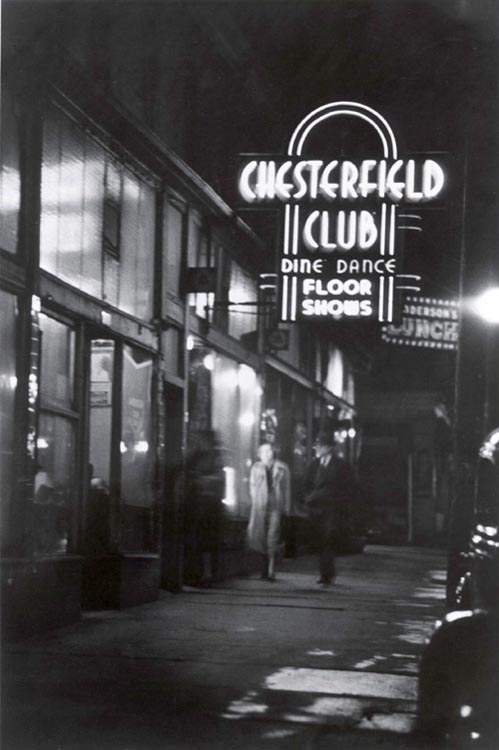
The Chesterfield Club was a jazz club in Kansas City, Missouri, that operated from 1927 to 1941. It was located at 23rd and Vine Streets in the heart of Kansas City’s jazz district. The club was owned and operated by Frank Costello, a notorious mobster.
The Chesterfield Club was one of the most popular jazz clubs in Kansas City during its time in operation. It was known for its luxurious atmosphere, high-quality sound system, and diverse lineup of performers. The club was a popular spot for both locals and tourists alike, and it was one of the few places where African Americans could come to dance and listen to jazz music.
Some of the notable jazz musicians who performed at the Chesterfield Club included Count Basie, Lester Young, Ben Webster, and Charlie Parker. The club was also a popular spot for jam sessions, and it was one of the places where the new style of jazz known as bebop was developed.
The Chesterfield Club closed its doors in 1941 due to pressure from the government. The club was known for its association with organized crime, and the government was determined to shut it down.
Despite its short lifespan, the Chesterfield Club played a major role in the development of Kansas City jazz. It was a place where some of the greatest jazz musicians of all time performed, and it helped popularize the Kansas City jazz style.
In 2023, a new Chesterfield Bar opened at 1400 Main Street in Kansas City, Missouri. The new bar is not affiliated with the original Chesterfield Club but is a tribute to the legendary jazz venue.
Charlie Parker, Jr.
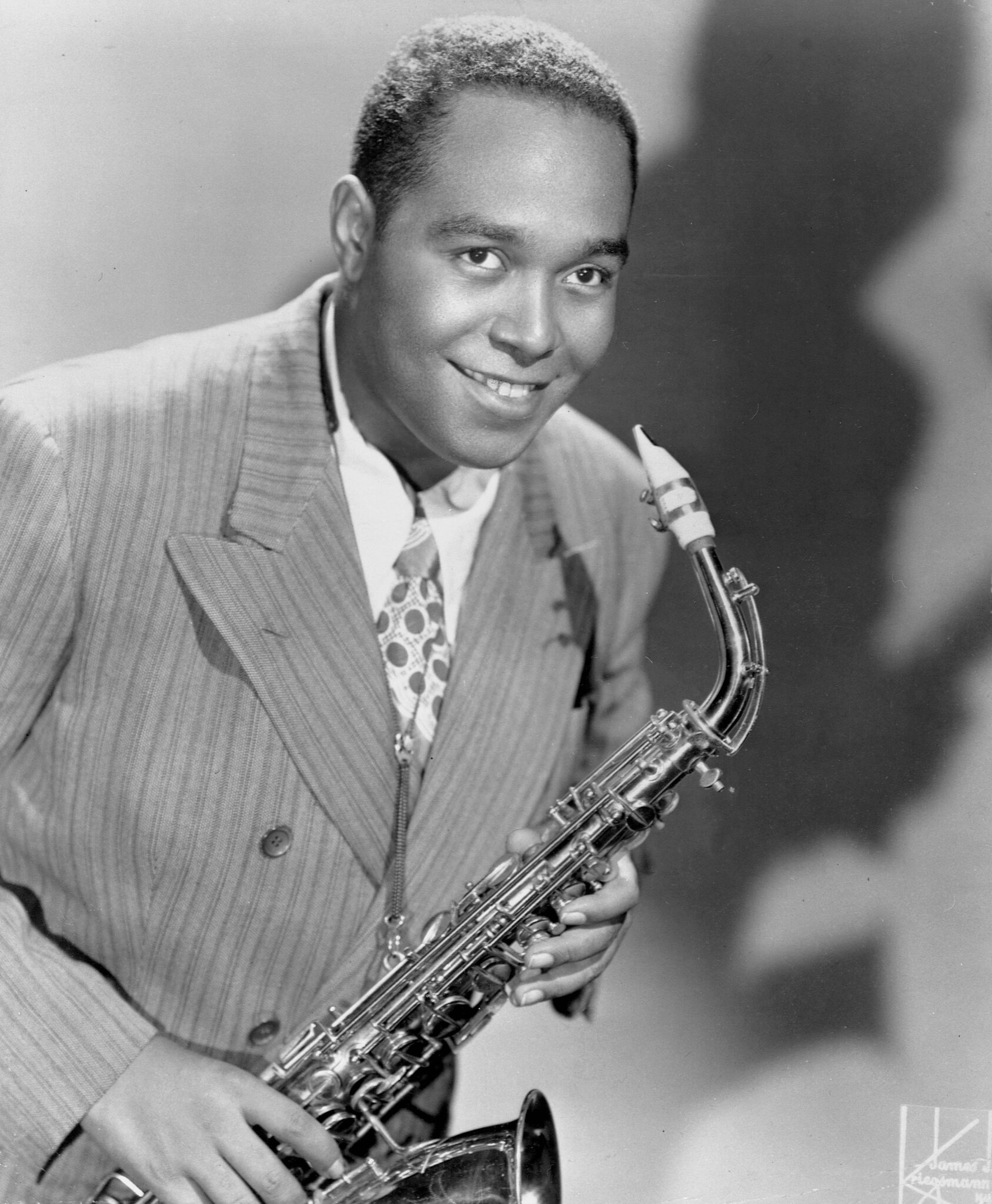
Charlie Parker, Jr. (1920 – 1955), nicknamed “Bird” or “Yardbird,” was an American jazz alto saxophonist, composer, and bandleader. Parker was a highly influential soloist and leading figure in the development of bebop, a form of jazz characterized by fast tempos, virtuosic technique, and advanced harmonies. He was a virtuoso and introduced revolutionary rhythmic and harmonic ideas into jazz, including rapid passing chords, new variants of altered chords, and chord substitutions. Primarily a alto saxophone player, Parker’s tone ranged from clean and penetrating to sweet and somber.
Parker was born in Kansas City, Kansas, and grew up in Kansas City, Missouri, during the great years of Kansas City jazz. He began playing the alto saxophone when he was 13 years old, and by the late 1930s, he was one of the leading jazz musicians in Kansas City. In 1942, Parker moved to New York City, where he began collaborating with trumpeter Dizzy Gillespie and other bebop pioneers. Gillespie and Parker developed a new style of jazz that was more complex and challenging than the swing music that was popular at the time. Bebop was characterized by its fast tempos, virtuosic technique, and advanced harmonies.
Parker quickly became one of the world’s most respected and influential jazz musicians. He recorded prolifically and performed with many of the greatest jazz musicians of his time, including Miles Davis, Thelonious Monk, and Bud Powell. Parker was also a gifted composer, and he wrote many jazz standards, including “Ko-Ko,” “Ornithology,” and “Confirmation”.
Parker’s personal life was troubled, and he struggled with addiction and mental health problems. He died of a heart attack in New York City in 1955 at the age of 34. Despite his short life, Parker left a profound legacy on jazz music. He is considered one of the greatest jazz saxophonists of all time, and his innovations continue to influence jazz musicians today.
In addition to his musical accomplishments, Parker was also a cultural icon. He was one of the first jazz musicians to be taken seriously as a serious artist, and he was a role model for many young African Americans. Parker’s style of dress, slang, and attitude was all influential, and he helped create the image of the “hipster”. Parker’s music and life have been the subject of numerous books, articles, and films. He remains one of the most popular and influential jazz musicians of all time.
James Columbus “Jay” McShann
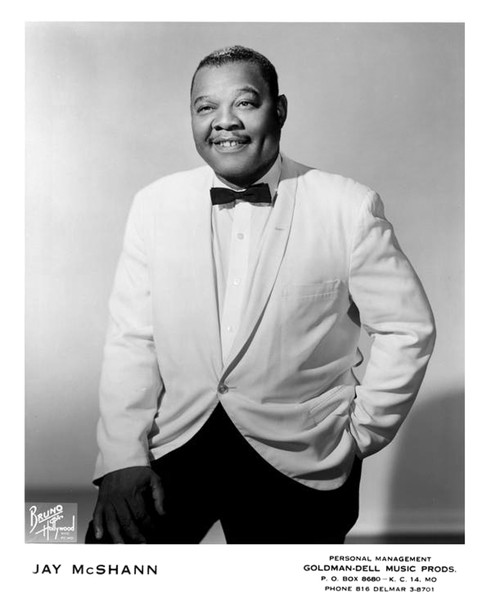
James Columbus “Jay” McShann (January 12, 1916 – December 7, 2006) was an American jazz pianist, vocalist, composer, and bandleader. He led bands in Kansas City, Missouri, that included Charlie Parker, Bernard Anderson, Walter Brown, and Ben Webster.
McShann was born in Muskogee, Oklahoma, and was nicknamed Hootie. During his youth, he taught himself how to play the piano by observing his sister’s piano lessons and trying to practice tunes he heard off the radio. He was also heavily influenced by late-night broadcasts of pianist Earl Hines from Chicago’s Grand Terrace Cafe: “When ‘Fatha’ (Hines) went off the air, I went to bed.” He began working as a professional musician in 1931 at the age of 15, performing around Tulsa, Oklahoma, and neighboring Arkansas.
In 1936, McShann moved to Kansas City, Missouri, where he quickly established himself as one of the leading jazz pianists in the city. He formed his own band in 1937, and in 1939, he added a young Charlie Parker to the lineup. Parker played with McShann’s band for two years, and the two musicians developed a close friendship.
McShann’s band was one of the most popular in Kansas City during the late 1930s and early 1940s. They recorded several hit songs, including “Confessin’ the Blues” and “Hootie’s Blues”. In 1942, McShann was drafted into the army, and his band disbanded.
After the war, McShann reformed his band and continued to perform and record. He also taught at several universities and music schools. In the 1970s and 1980s, McShann experienced a bit of a renaissance, with increased recording and performing opportunities. He also appeared in several films and documentaries about jazz music.
McShann died in Kansas City, Missouri, in 2006 at the age of 90. He was a highly respected figure in the jazz world, and his music continues to be enjoyed by people all over the world.
Coleman Hawkins
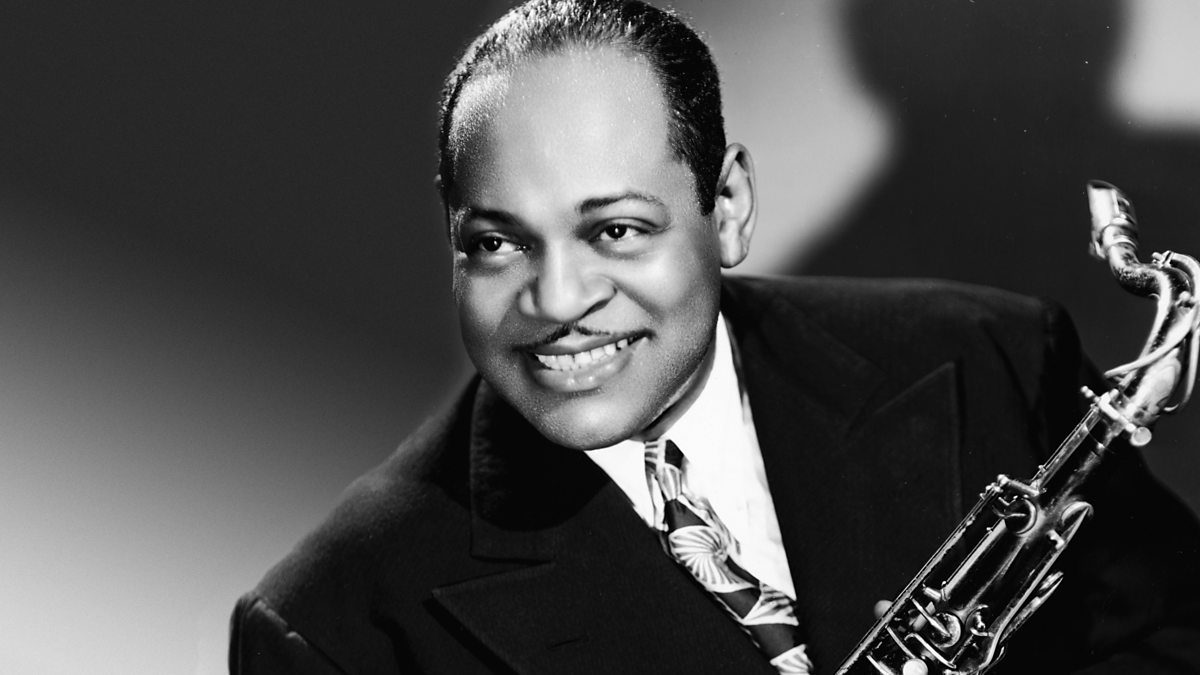
Coleman Hawkins (1904-1969) was a tenor saxophonist who played a seminal role in developing Kansas City jazz and jazz as a whole. He was born in St. Joseph, Missouri, and began playing saxophone at a young age. He moved to Kansas City in 1917 and quickly established himself as one of the most talented saxophonists in the city.
Hawkins played with several bands in Kansas City, including Bennie Moten’s band and Fletcher Henderson’s orchestra. He was known for his big, full sound and his soulful improvisations. He was also a skilled composer and arranger. He composed several tunes for Henderson’s orchestra, including “Body and Soul” and “How Long Blues.”
In 1934, Hawkins moved to Europe, where he played with several bands and recorded with many famous musicians, including Django Reinhardt and Benny Carter. He returned to the United States in 1939 and continued to play and record with various groups for the rest of his career.
Hawkins was a highly respected musician, and he was known for his humility and his willingness to help others. He was a mentor to many young musicians, including Lester Young and Charlie Parker. He was also a popular educator, and he taught at several universities.
Hawkins died in New York City in 1969 at the age of 64. He is considered one of the greatest tenor saxophonists of all time, and he played a major role in the development of Kansas City jazz and jazz as a whole.
The DeLuxe Night Club
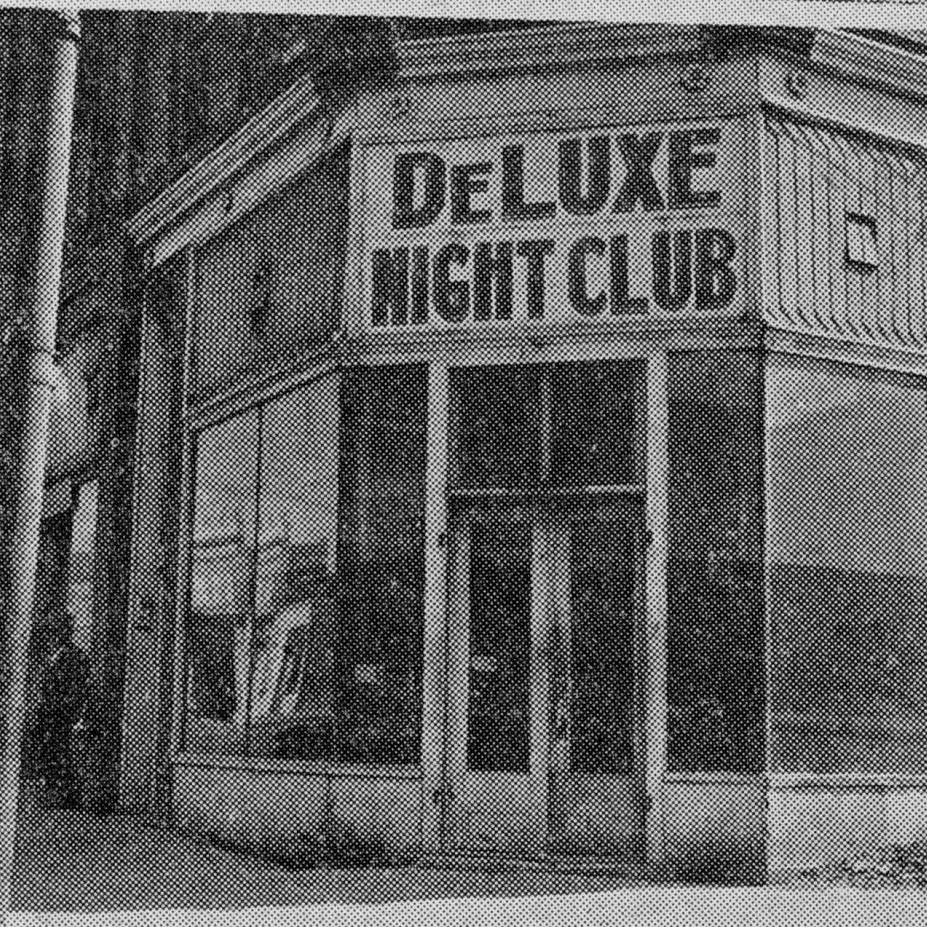
The DeLuxe Night Club was a jazz club in Kansas City that operated from 1928 to 1935. It was one of the most popular and influential jazz clubs in Kansas City during the Prohibition Era, and it played a major role in the development of Kansas City jazz.
The DeLuxe Night Club was located at 1108 East 12th Street in the heart of Kansas City’s African-American community. It was owned and operated by Joe Glaser, a businessman who was a passionate jazz fan. The club was small and intimate, with a capacity of about 150 people. It had a luxurious atmosphere, with plush carpets, velvet-draped walls, and crystal chandeliers.
The DeLuxe Night Club was known for its excellent acoustics and its world-class entertainment. The club featured a nightly lineup of the best jazz musicians in Kansas City, including Count Basie, Charlie Parker, Lester Young, and Ben Webster. The DeLuxe Night Club was also one of the few jazz clubs in Kansas City that was open to both black and white patrons.
The DeLuxe Night Club closed its doors in 1935, due to the end of Prohibition and the decline of the speakeasy. However, the club’s legacy continues to this day.
In 2018, the Kansas City Jazz Museum opened a new exhibit called “The DeLuxe Night Club: Where Kansas City Jazz Took Flight.” The exhibit tells the story of the club and its impact on jazz history. The exhibit features artifacts from the club, such as the original neon sign and the bandstand. It also includes recordings and interviews with musicians who played at the club.
Hymie’s Tap Room

Hymie’s Tap Room was a jazz club in Kansas City that operated from 1927 to 1942. It was one of the most popular and influential jazz clubs in Kansas City during the Swing Era, and it played a major role in developing Kansas City jazz.
Hymie’s Tap Room was located at 1004 East 18th Street in the heart of Kansas City’s African American community. It was owned and operated by Hymie Jacobson, a businessman who was a passionate jazz fan. The club was small and intimate, with a capacity of only about 100 people. It had a simple, no-frills atmosphere, a wooden bar, a few tables, and a small dance floor.
Despite its modest appearance, Hymie’s Tap Room was a major attraction for jazz musicians and fans from all over the country. The club was known for its excellent acoustics and relaxed atmosphere, encouraging musicians to experiment and improvise. As a result, Hymie’s Tap Room became a breeding ground for new jazz styles, such as the Kansas City Shuffle and the Blues Shouter style.
Some of the greatest jazz musicians played at Hymie’s Tap Room during the Swing Era, including Count Basie, Charlie Parker, Lester Young, Ben Webster, and Buck Clayton. The club was also a regular stop for touring jazz bands like those led by Duke Ellington, Benny Goodman, and Jimmie Lunceford.
Hymie’s Tap Room closed its doors in 1942, due to the war effort and the decline of the Swing Era. In 2020, the American Jazz Museum opened a new exhibit called “Hymie’s Tap Room: The Heart of Kansas City Jazz.” The exhibit tells the club’s story and its impact on jazz history. The exhibit features artifacts from the club, such as the original neon sign and the bandstand. It also includes recordings and interviews with musicians who played at the club.
Harlan Leonard
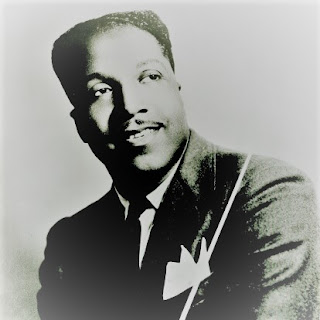
Harlan Leonard (1905-1983) was an American jazz clarinetist, saxophonist, and bandleader from Kansas City, Missouri. He was one of the most important and influential figures in the Kansas City jazz scene during the swing era.
Leonard was born in Kansas City in 1905. He began playing the clarinet at a young age, and by the time he was in his teens, he was performing in local clubs. In the late 1920s, he joined Bennie Moten’s Kansas City Orchestra, one of the era’s most popular and influential big bands. With Moten’s band, Leonard toured extensively and recorded several hit songs, including “Moten’s Swing” and “Pine Bluff Arkansas.”
In 1931, Leonard left Moten’s band to form his own group, Harlan Leonard and His Rockets. The Rockets quickly became one of the most popular bands in Kansas City. The band was known for its swinging rhythms, its innovative arrangements, and its focus on improvisation. Leonard’s Rockets also featured a number of notable soloists, including Charlie Parker, Tadd Dameron, and Lester Young.
In the early 1940s, Leonard’s Rockets disbanded due to the Second World War. Leonard left the music business and worked in banking and for the Internal Revenue Service. He returned to music briefly in the 1950s but retired in 1960.
Leonard’s impact on the Kansas City jazz scene was significant. He was one of the first bandleaders to bring the big band sound to the city, and his band was one of the most popular in Kansas City during the Swing Era. Leonard also helped to develop the careers of a number of notable jazz musicians, including Charlie Parker and Tadd Dameron.
The Bennie Moten Orchestra
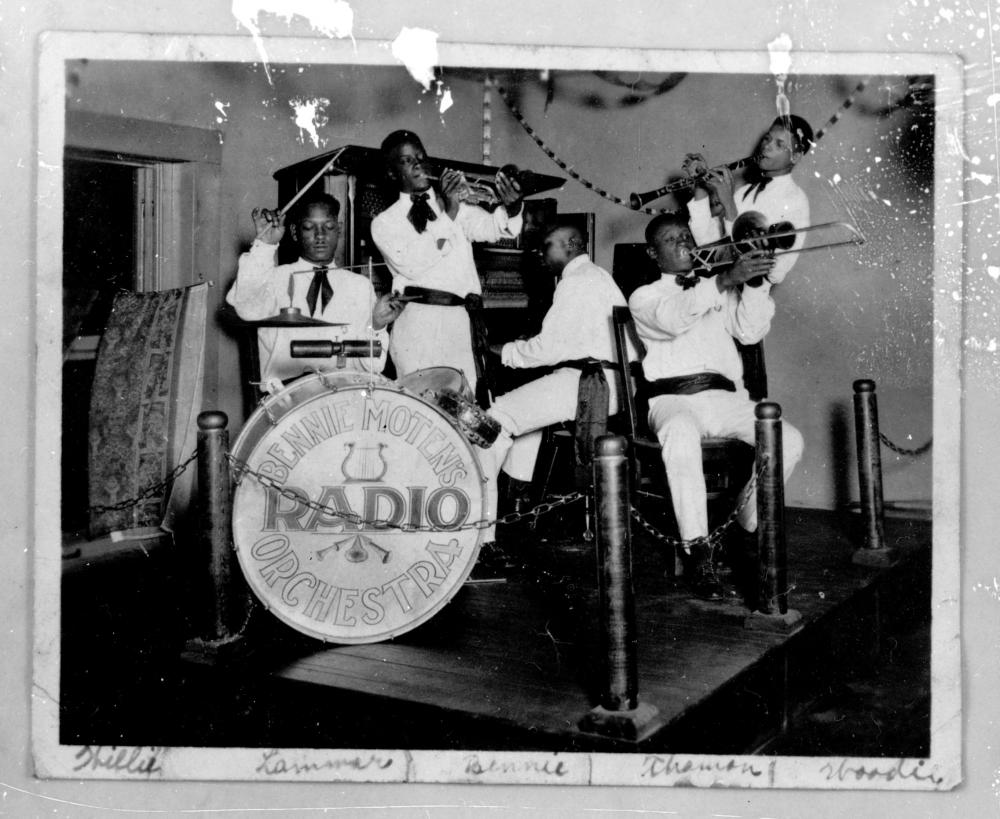
The Bennie Moten Orchestra was a jazz band founded and led by Bennie Moten in Kansas City, Missouri, in 1922. The band was one of the most popular and influential jazz bands of the Swing Era and played a major role in developing Kansas City jazz.
The Bennie Moten Orchestra was known for its hard-swinging, blues-based sound. The blues heavily influenced the band’s music, but it also incorporated elements of ragtime and other popular musical styles of the day. The Bennie Moten Orchestra was also known for its improvisational skills and ability to create excitement and energy at its live performances.
The Orchestra included some of the greatest jazz musicians of all time, including Count Basie, Lester Young, Ben Webster, and Buck Clayton. The band also featured a number of talented singers, including Jimmy Rushing and Walter Page. They toured extensively throughout the United States and Europe during the Swing Era. The band played at major venues such as the Cotton Club in New York City and the Apollo Theater in Chicago. The Bennie Moten Orchestra also made a number of recordings, including the classic song “Moten’s Swing.”
The Bennie Moten Orchestra profoundly impacted the development of jazz music. The band’s hard-swinging, blues-based sound helped define Kansas City jazz’s sound. The Bennie Moten Orchestra also helped to popularize improvisation and soloing in jazz music.
The Eblon Theater
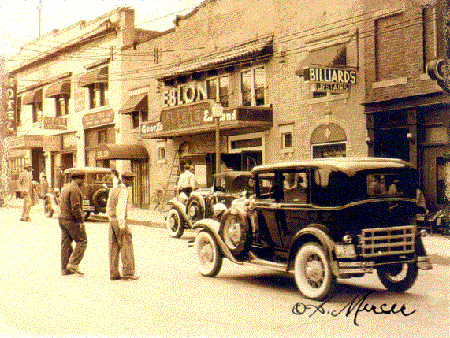
The Eblon Theater was a vaudeville and motion picture theater in Kansas City that operated from 1923 to 1933. It was also a major jazz venue, and it played a significant role in the development of Kansas City jazz.
The Eblon Theater was located at 1822 Vine Street in the heart of Kansas City’s African-American community. It was the only theater in the area owned and operated by African Americans. The Eblon Theater was a state-of-the-art facility, with a Spanish Colonial façade and a luxurious interior.
In addition to showing films and vaudeville acts, the Eblon Theater also featured a regular lineup of jazz musicians. Ragtime composer James Scott led the theater’s house band. However, the Eblon Theater also featured many other notable jazz musicians, including Count Basie, Charlie Parker, Lester Young, and Ben Webster.
The Eblon was converted into a nightclub called the Cherry Blossom Club in 1933. The Cherry Blossom Club was also a popular jazz venue, and it continued to host many of the same musicians who had played at the Eblon Theater.
The Eblon Theater and the Cherry Blossom Club played a significant role in the development of Kansas City jazz. The two venues provided a place where jazz musicians could experiment and innovate, and they helped to popularize the sound of Kansas City jazz around the world.
Today, the site of the Eblon Theater is marked by a historic plaque. The plaque commemorates the theater’s importance to the history of Kansas City jazz.
The Brown Derby Club
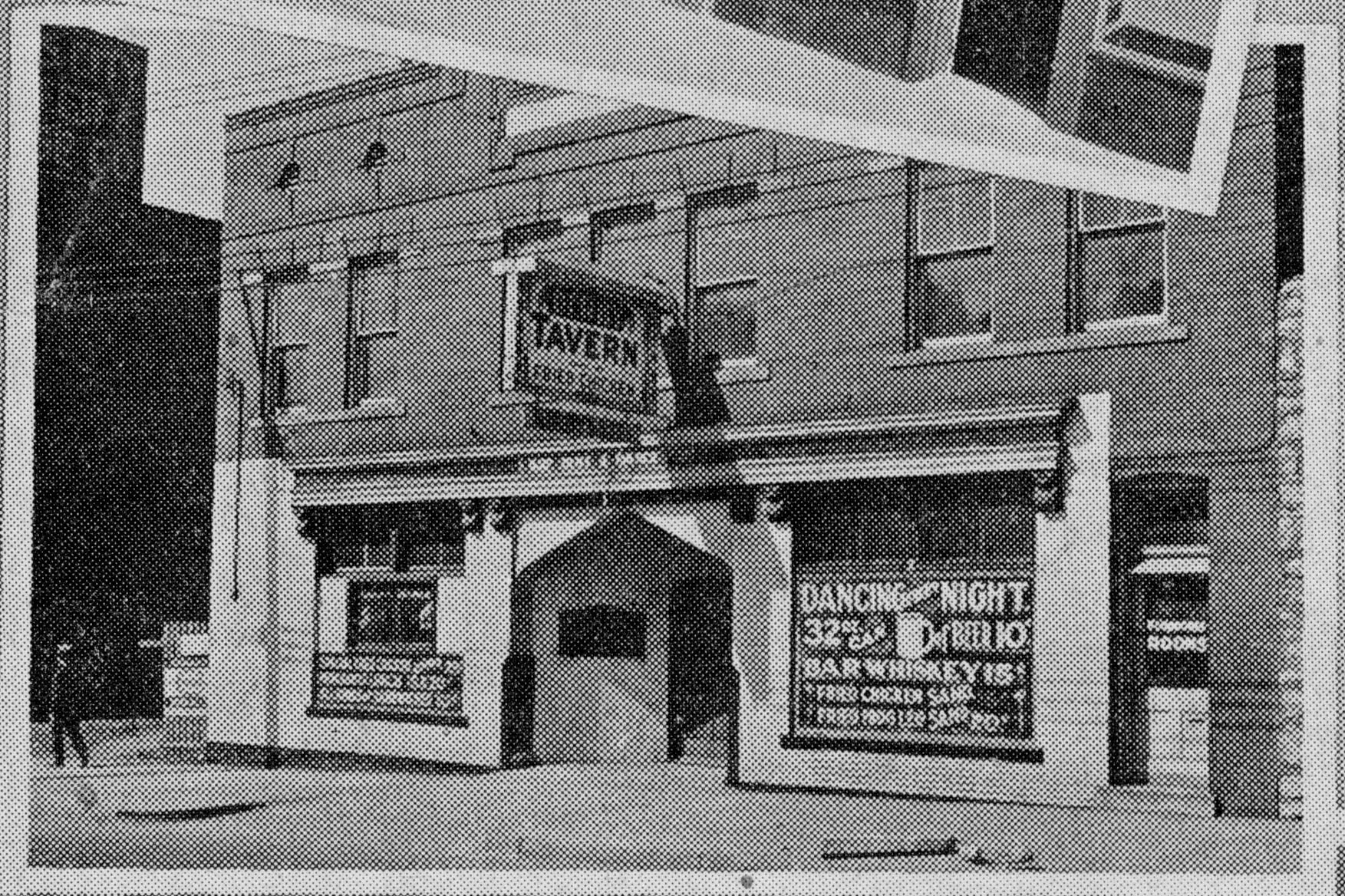
The Brown Derby Club was a jazz club in Kansas City that operated from 1931 to 1942. It was one of the most popular and influential jazz clubs in Kansas City during the Swing Era, and it played a major role in developing Kansas City jazz.
The Brown Derby Club was located at 1810 East 12th Street in the heart of Kansas City’s African-American community. It was owned and operated by Joe Glaser, a businessman who was a passionate jazz fan. The club was small and intimate, with a capacity of about 150 people. It had a relaxed atmosphere, with a wooden bar, a few tables, and a small dance floor.
The Brown Derby Club was known for its excellent acoustics and world-class entertainment. The club featured a nightly lineup of the best jazz musicians in Kansas City, including Count Basie, Charlie Parker, Lester Young, and Ben Webster. The Brown Derby Club was also one of the few jazz clubs in Kansas City open to black and white patrons.
The club’s relaxed atmosphere and commitment to quality entertainment attracted the best jazz musicians in the country. As a result, the Brown Derby Club became a breeding ground for new jazz styles, such as the Kansas City Shuffle and the Blues Shouter style.
The Brown Derby Club closed its doors in 1942, due to the war effort and the decline of the Swing Era. However, the club’s legacy continues to this day. The Brown Derby Club is considered one of the most important jazz clubs in Kansas City history. Today, the Brown Derby Club site is marked by a historic plaque. The plaque commemorates the club’s importance to the history of Kansas City jazz.
The Panama Garden Club
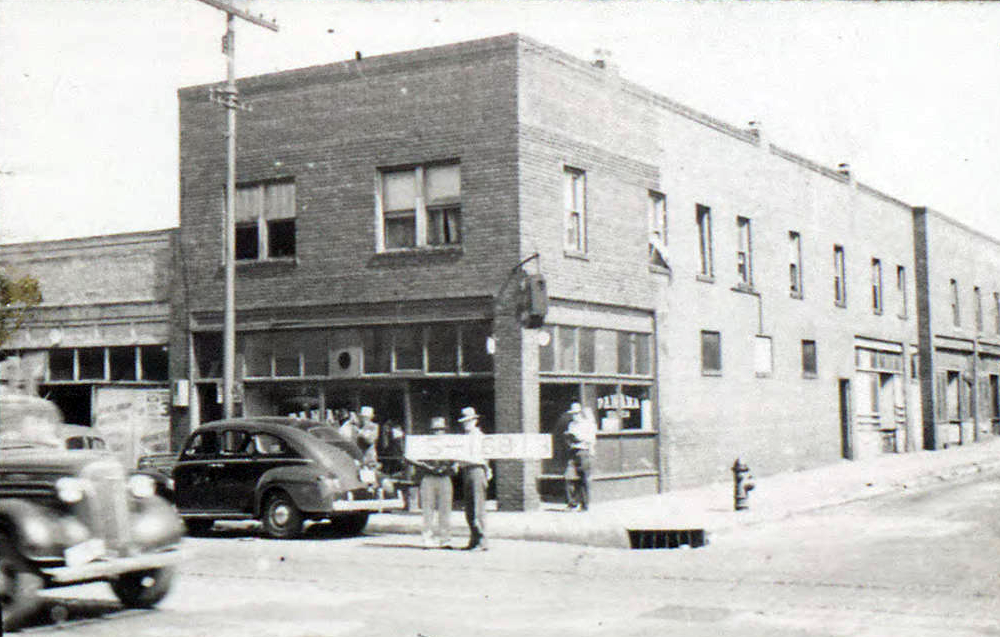
The Panama Garden Club was a jazz club in Kansas City that operated from 1929 to 1936. It was located at 1110 East 18th Street in the heart of the city’s African-American community.
The Panama Garden Club was owned and operated by Joe Glaser, a businessman who was a passionate jazz fan. The club was large and spacious, with about 500 people. It had a tropical atmosphere, palm trees, bamboo, and a large dance floor.
The Panama Garden Club was known for its excellent acoustics and world-class entertainment. The club featured a nightly lineup of the best jazz musicians in Kansas City, including Count Basie, Charlie Parker, Lester Young, and Ben Webster. The Panama Garden Club was also one of the few jazz clubs in Kansas City open to black and white patrons.
The Panama Garden Club played a major role in developing Kansas City jazz. The club’s large size and tropical atmosphere made it a popular destination for people from all over the city. The Panama Garden Club also helped to introduce Kansas City jazz to a national audience.
In 1936, the Panama Garden Club closed its doors due to the Great Depression and the decline of the speakeasy. However, the club’s legacy continues to this day. The Panama Garden Club is considered one of the most influential jazz clubs in Kansas City history. Today, the Panama Garden Club site is marked by a historic plaque. The plaque commemorates the club’s importance to the history of Kansas City jazz.
The Wiggle Inn
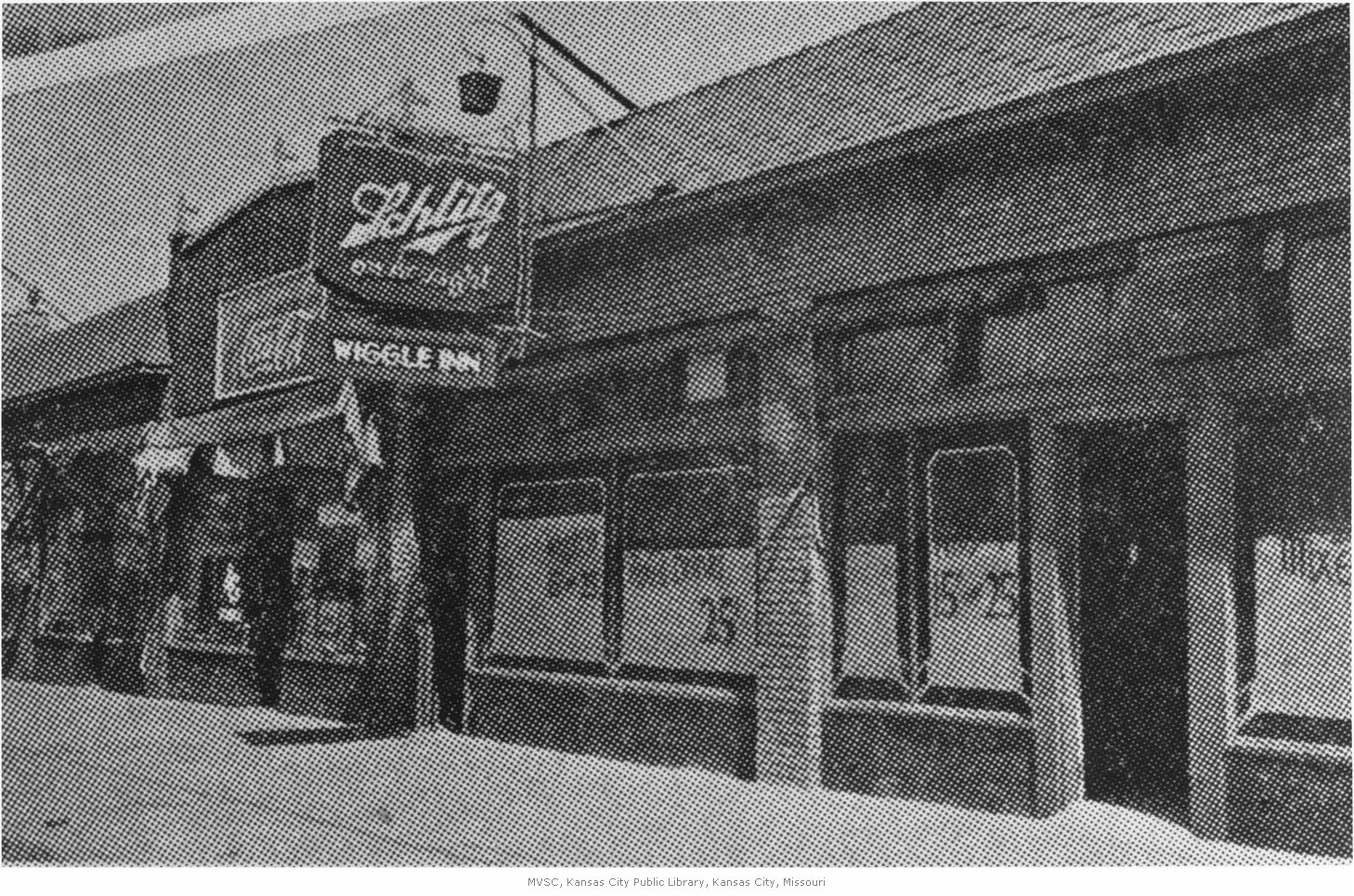
The Wiggle Inn was a jazz club in Kansas City that operated from 1922 to 1938. It was located at 1022 East 18th Street in the heart of the city’s African-American community.
The Wiggle Inn was owned and operated by George “Tick” Tocker, a former vaudeville performer. The club was small and intimate, with a capacity of about 150 people. It had a relaxed atmosphere, with a wooden bar, a few tables, and a small dance floor.
The Wiggle Inn was known for its excellent acoustics and its world-class entertainment. The club featured a nightly lineup of the best jazz musicians in Kansas City, including Count Basie, Charlie Parker, Lester Young, and Ben Webster. The Wiggle Inn was also one of the few jazz clubs in Kansas City open to black and white patrons.
The Wiggle Inn played a major role in developing Kansas City jazz. The club’s relaxed atmosphere and commitment to quality entertainment attracted the best jazz musicians in the country. As a result, the Wiggle Inn became a breeding ground for new jazz styles, such as the Kansas City Shuffle and the Blues Shouter style.
The Wiggle Inn closed its doors in 1938, due to the Great Depression and the decline of the speakeasy. However, the club’s legacy continues to this day. The Wiggle Inn is considered one of Kansas City’s most influential jazz clubs. Today, the site of the Wiggle Inn is marked by a historic plaque.
The State Line Tavern
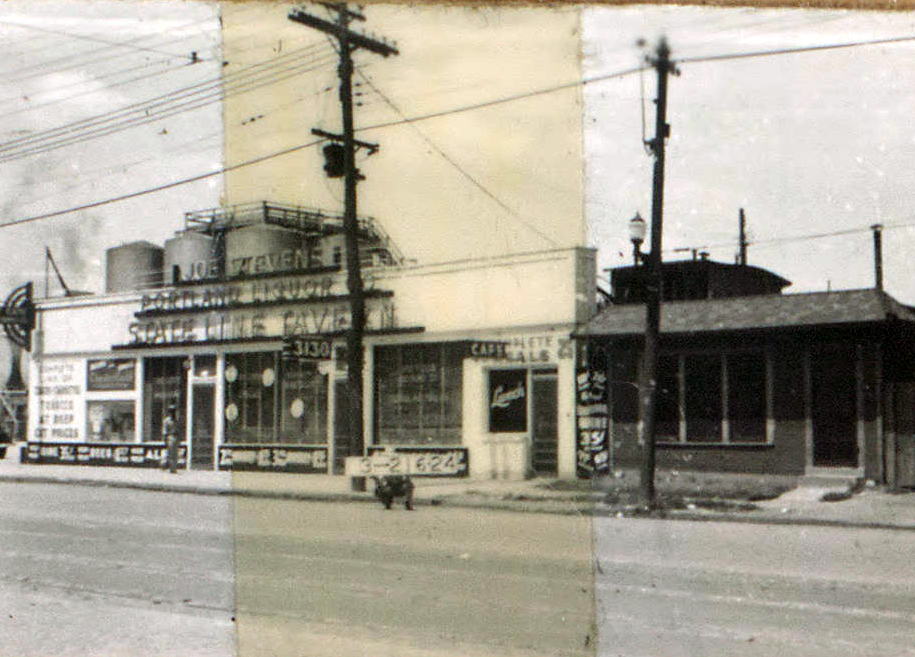
The State Line Tavern was a jazz club in Kansas City, Missouri, from 1926 to 1951. It was located at 3205 Southwest Boulevard, on the state line between Missouri and Kansas.
The State Line Tavern was owned and operated by Tom Pendergast, the corrupt political boss of Kansas City. Pendergast used the club to entertain his political allies and to launder money from his criminal activities.
The State Line Tavern was one of the most popular jazz clubs in Kansas City during the Swing Era. It featured a nightly lineup of the best jazz musicians in the country, including Count Basie, Charlie Parker, Lester Young, and Ben Webster. The club was also one of the few jazz clubs in Kansas City open to black and white patrons.
The State Line Tavern played a major role in developing Kansas City jazz. The club’s popularity and commitment to quality entertainment attracted the best jazz musicians in the country. As a result, the State Line Tavern became a breeding ground for new jazz styles, such as the Kansas City Shuffle and the Blues Shouter style.
The State Line Tavern closed its doors in 1951, due to Pendergast’s death and the decline of the Swing Era. However, the club’s legacy continues to this day. The State Line Tavern is considered one of the most influential jazz clubs in Kansas City history.




